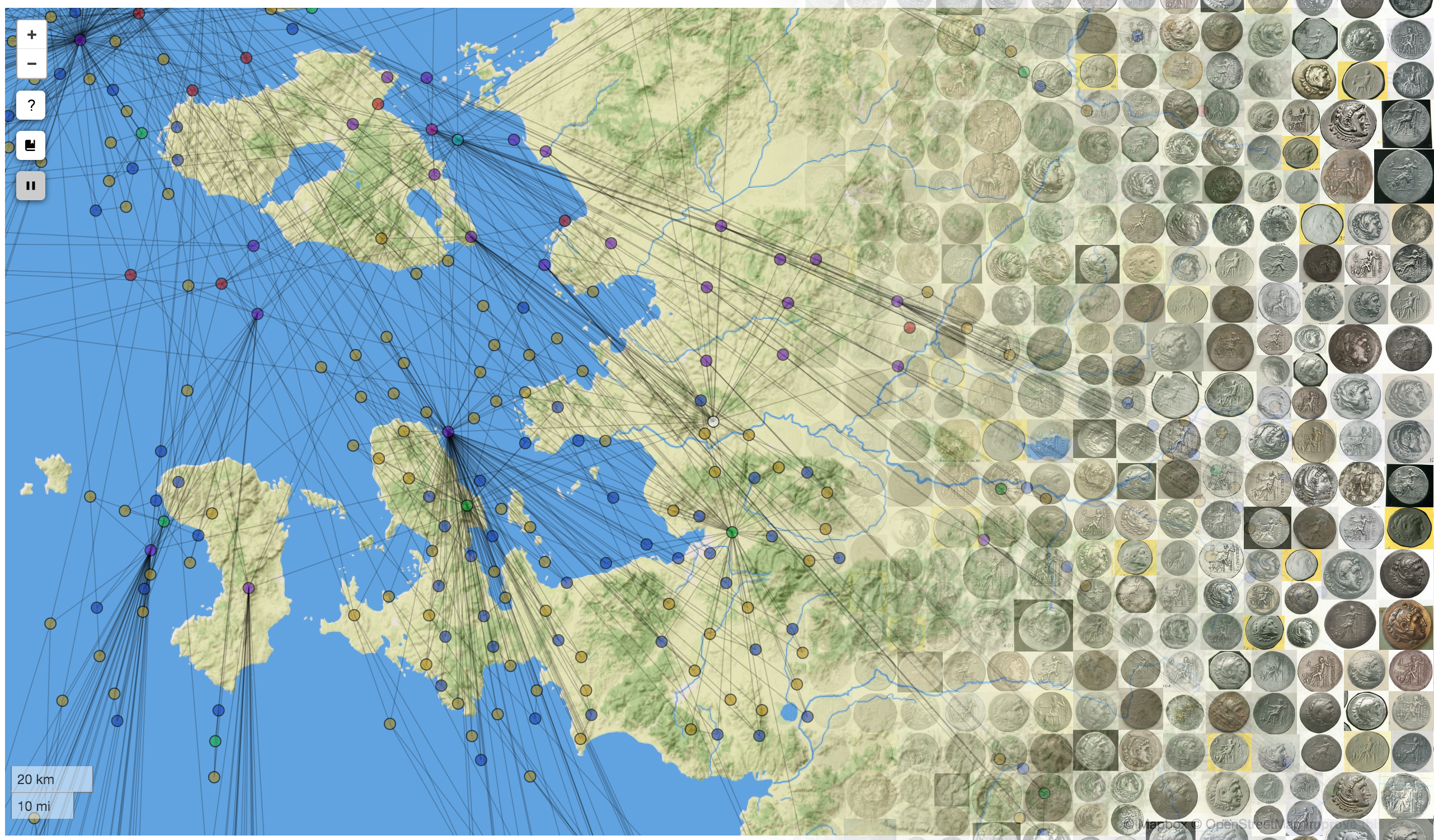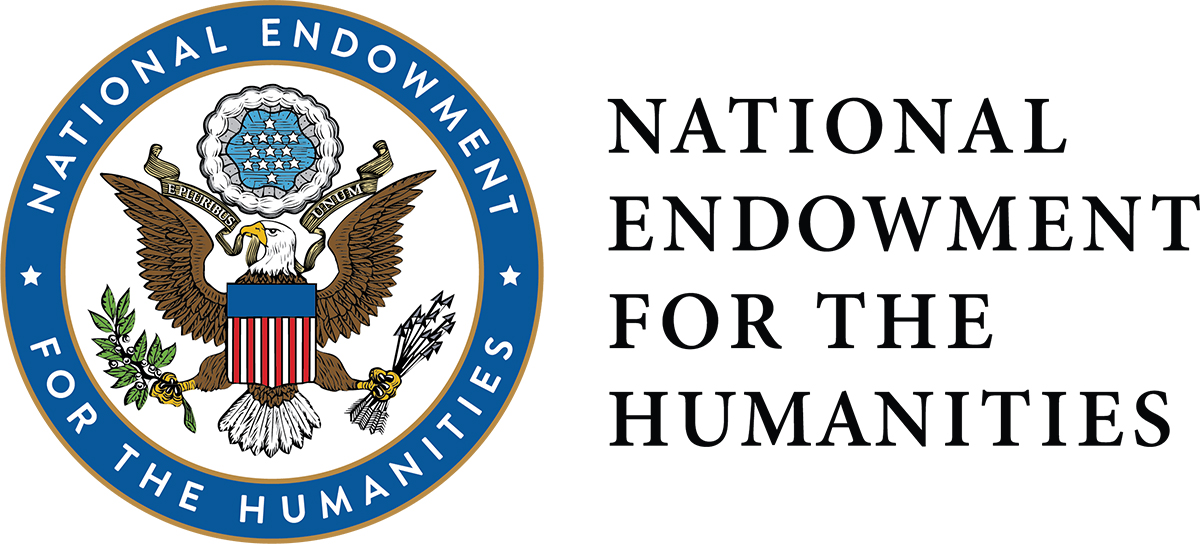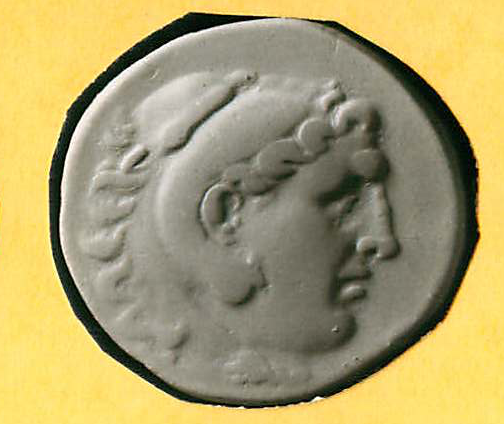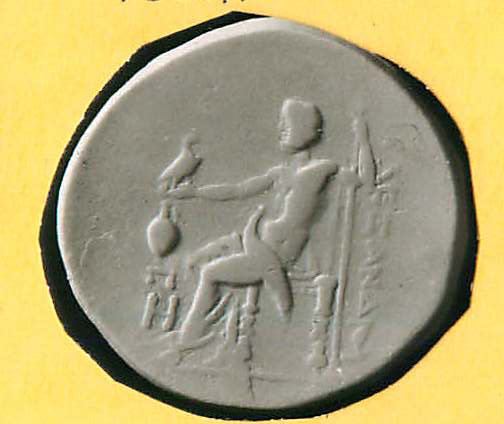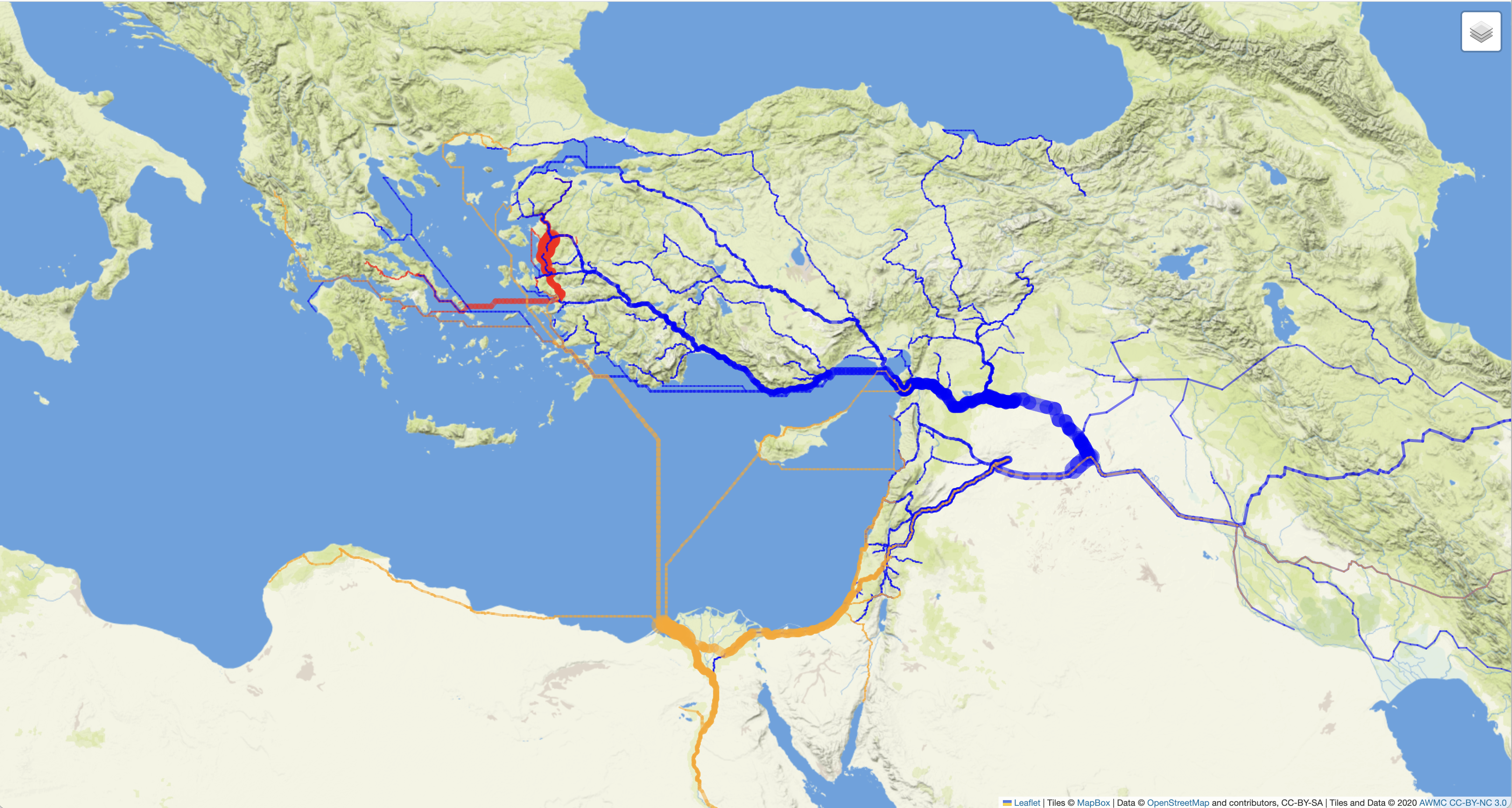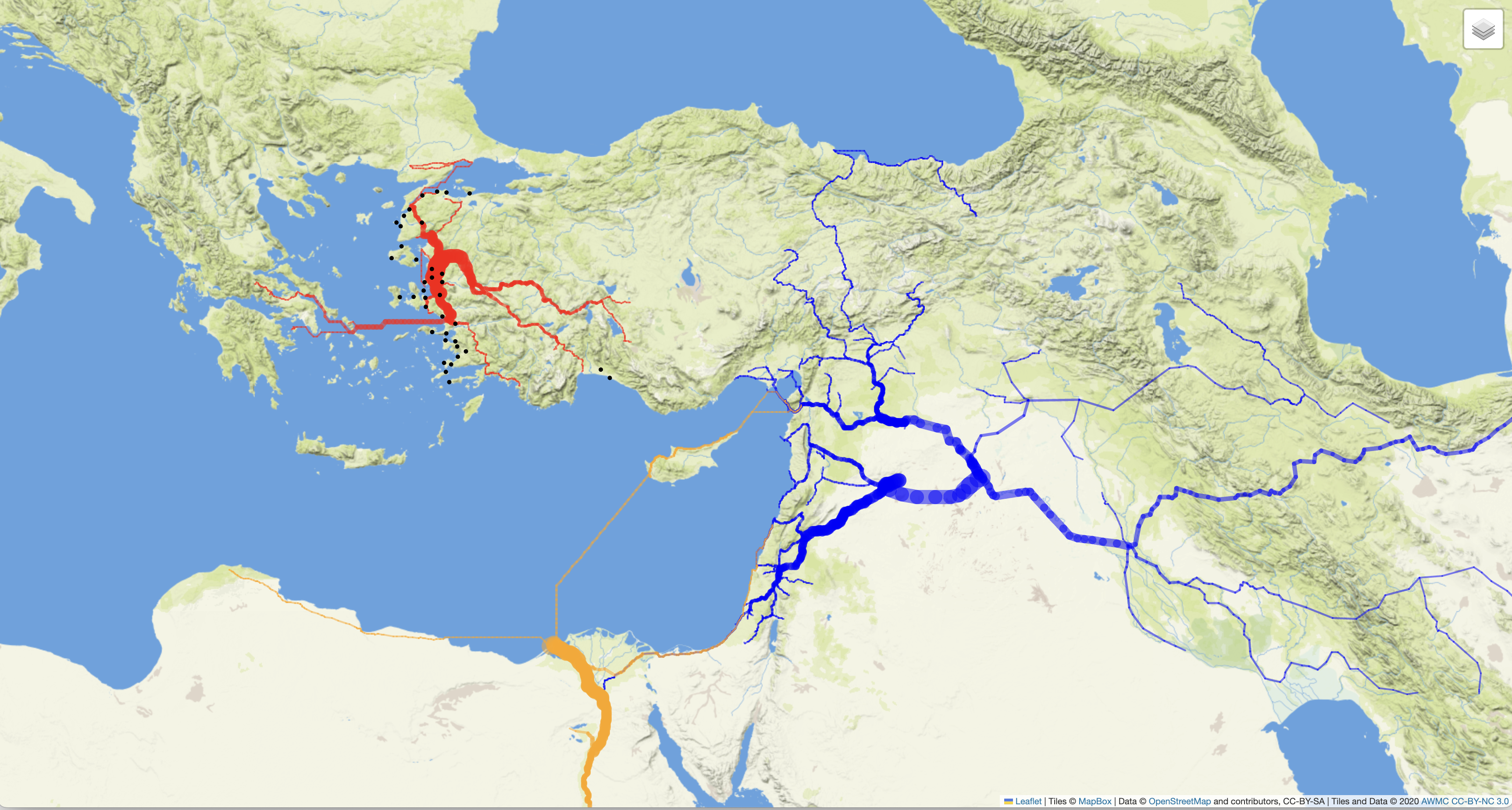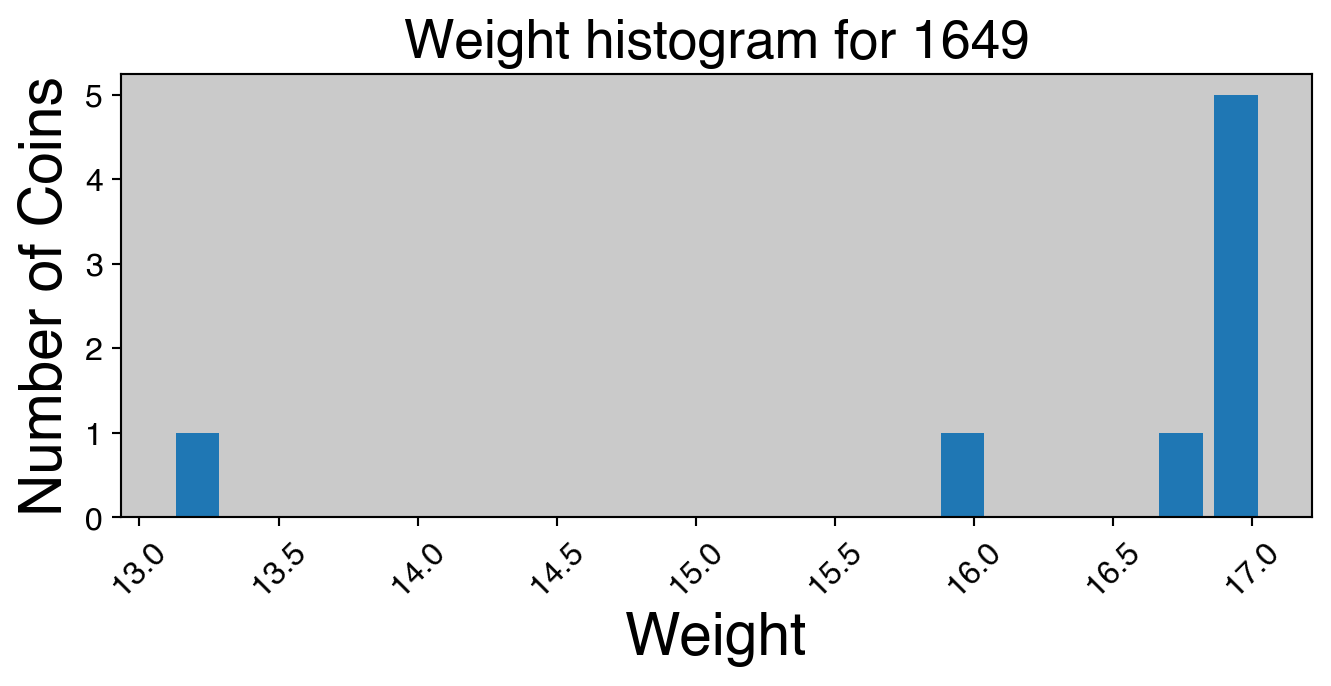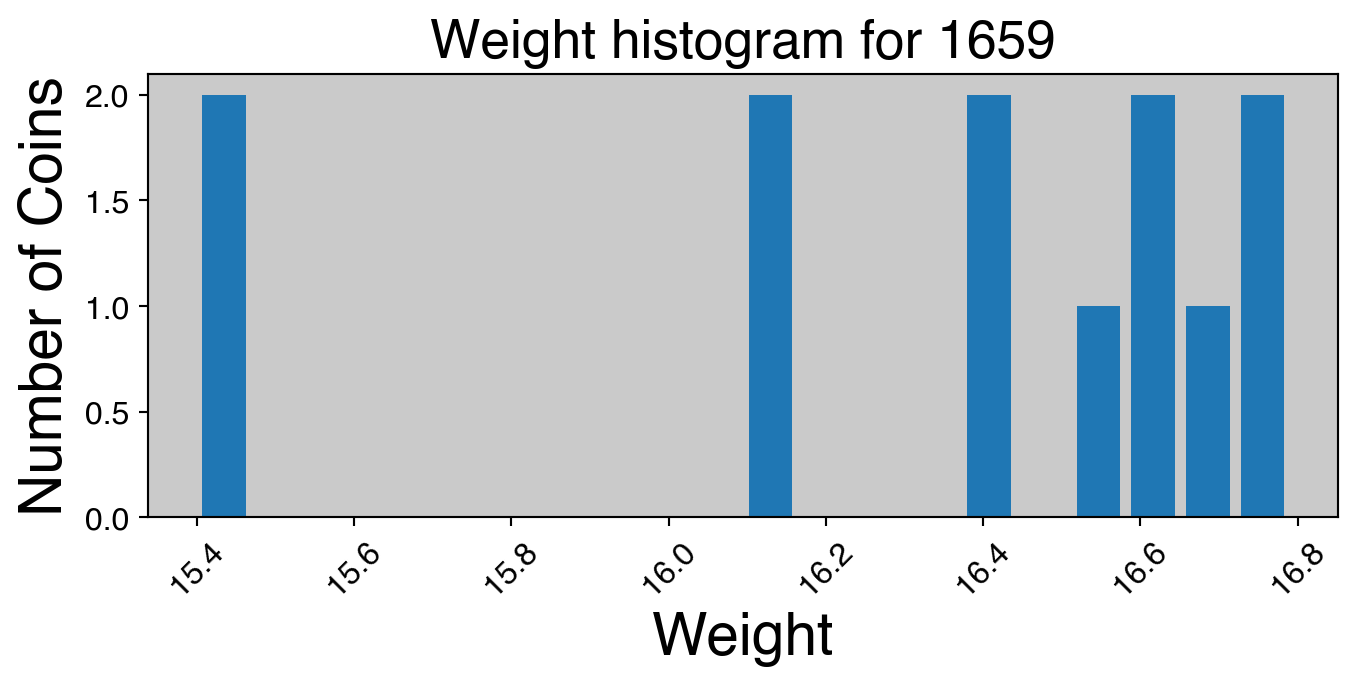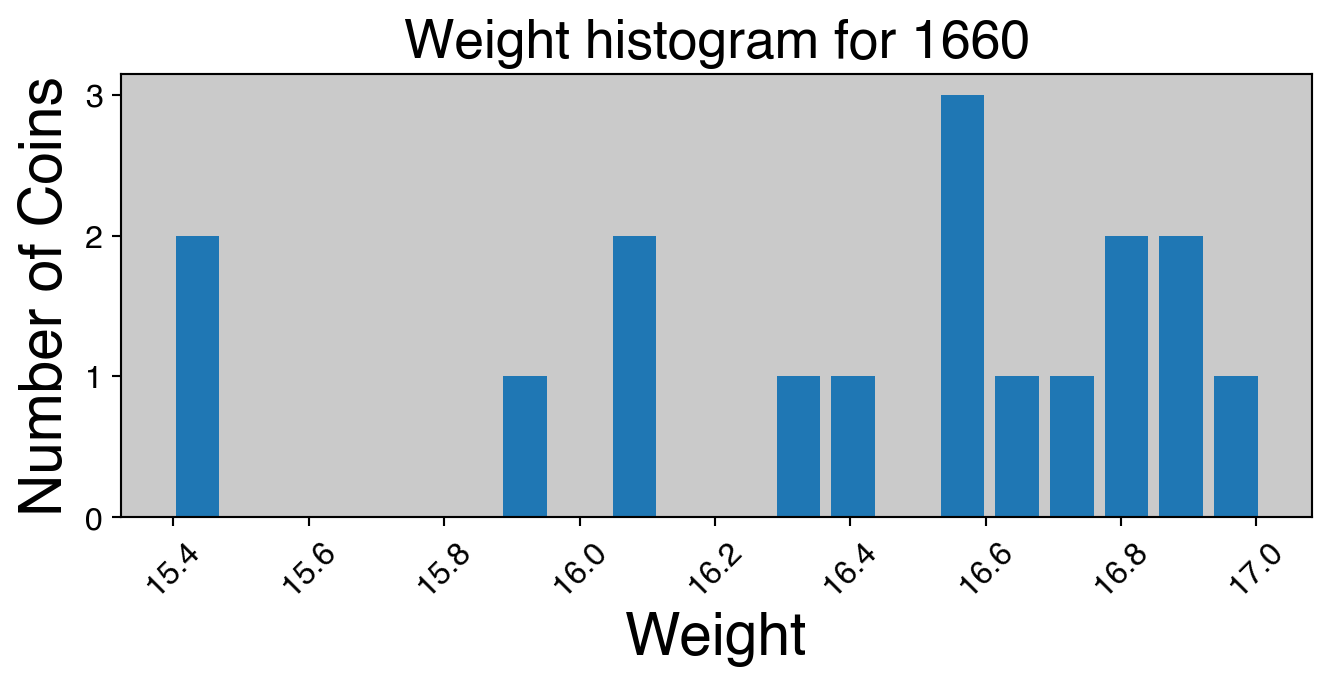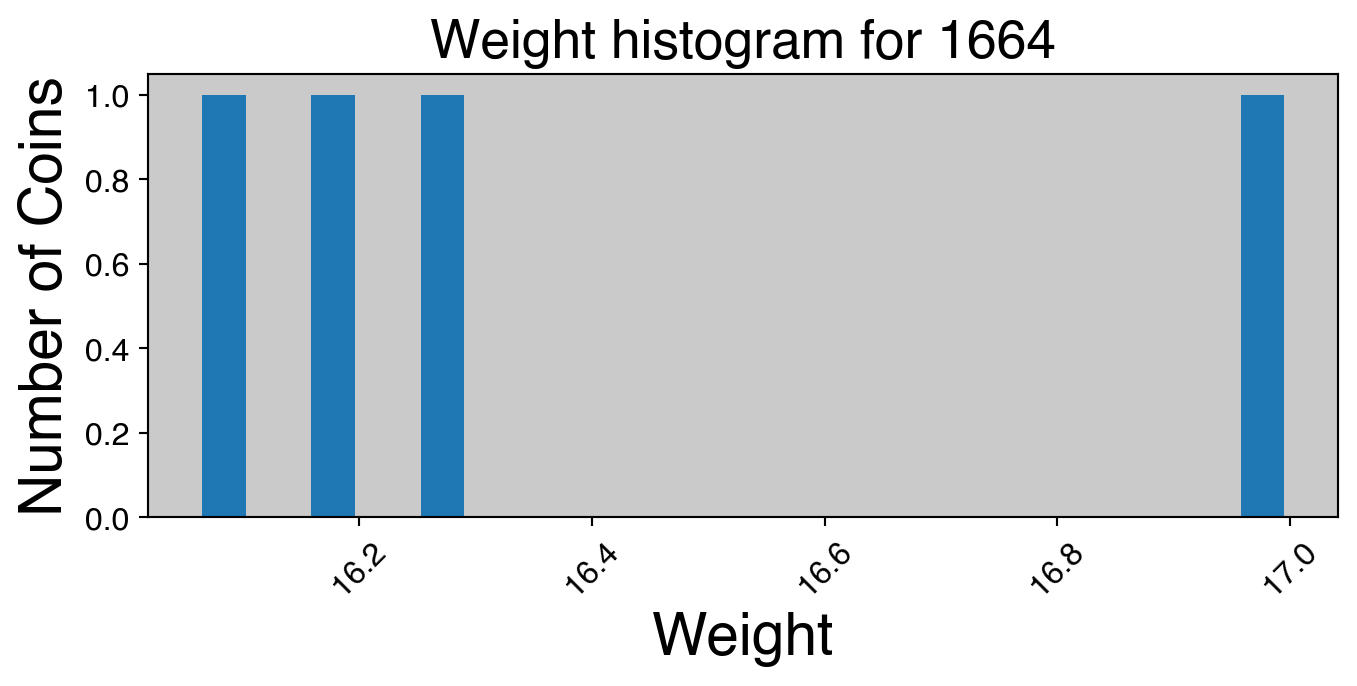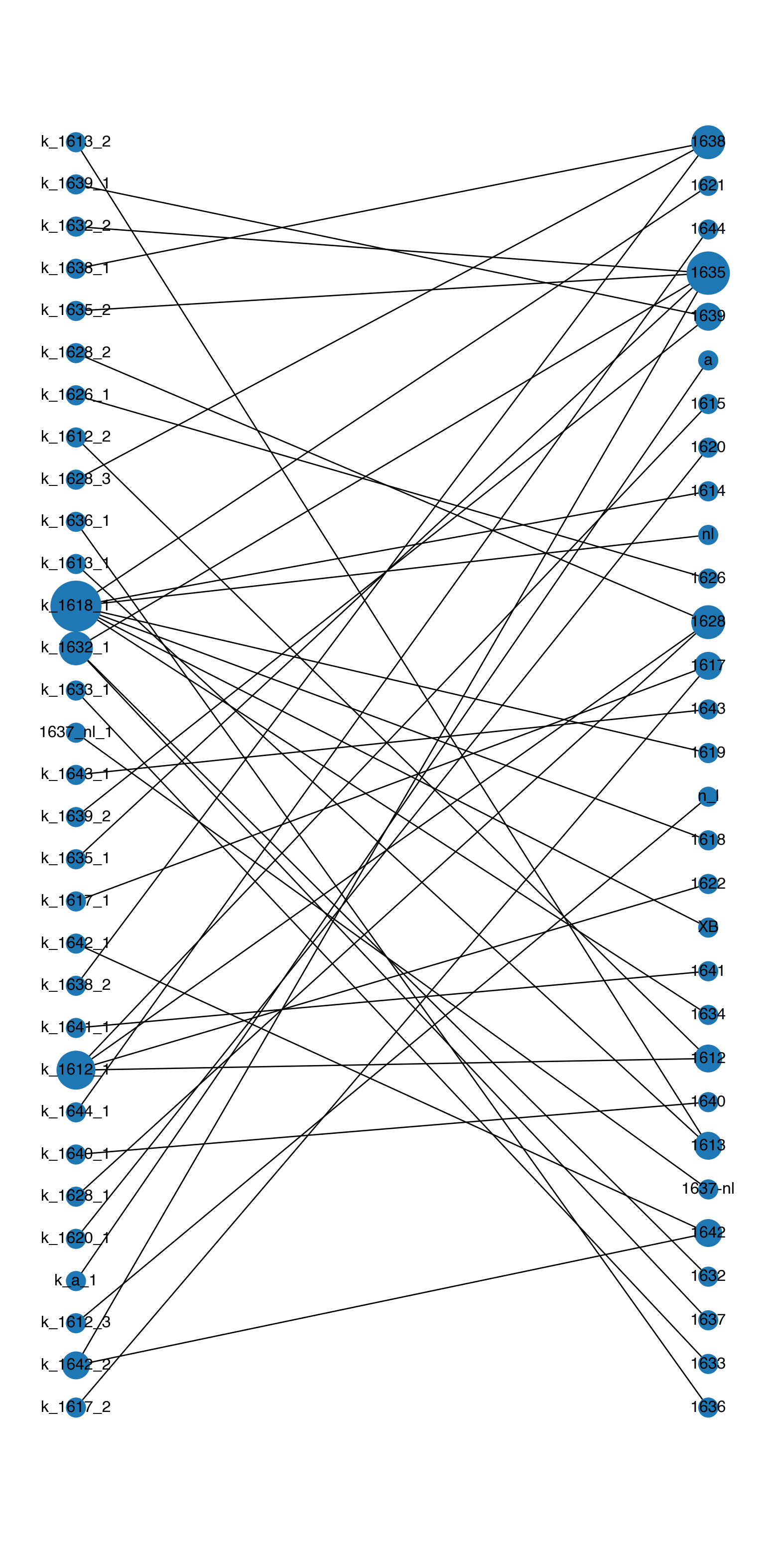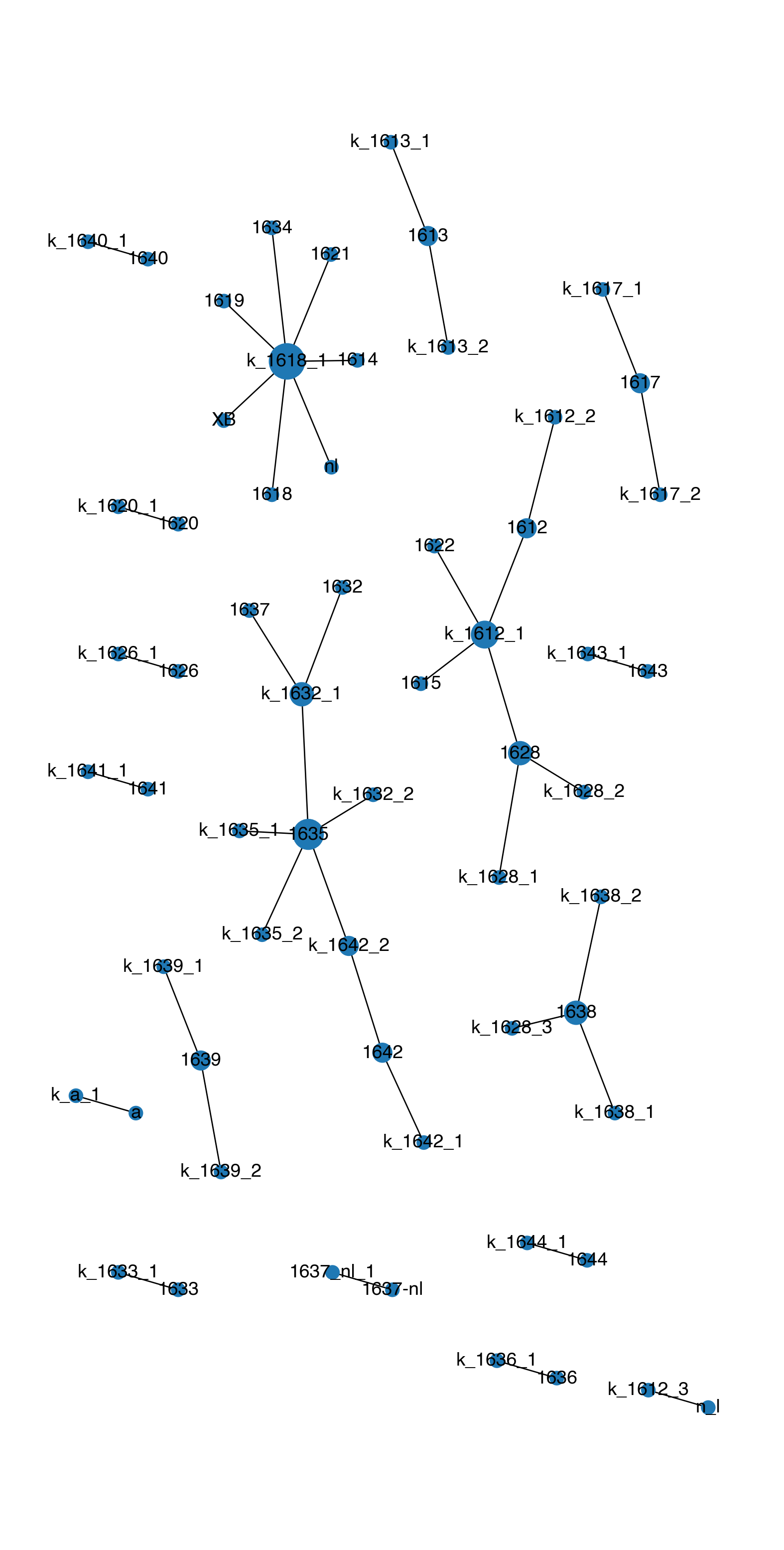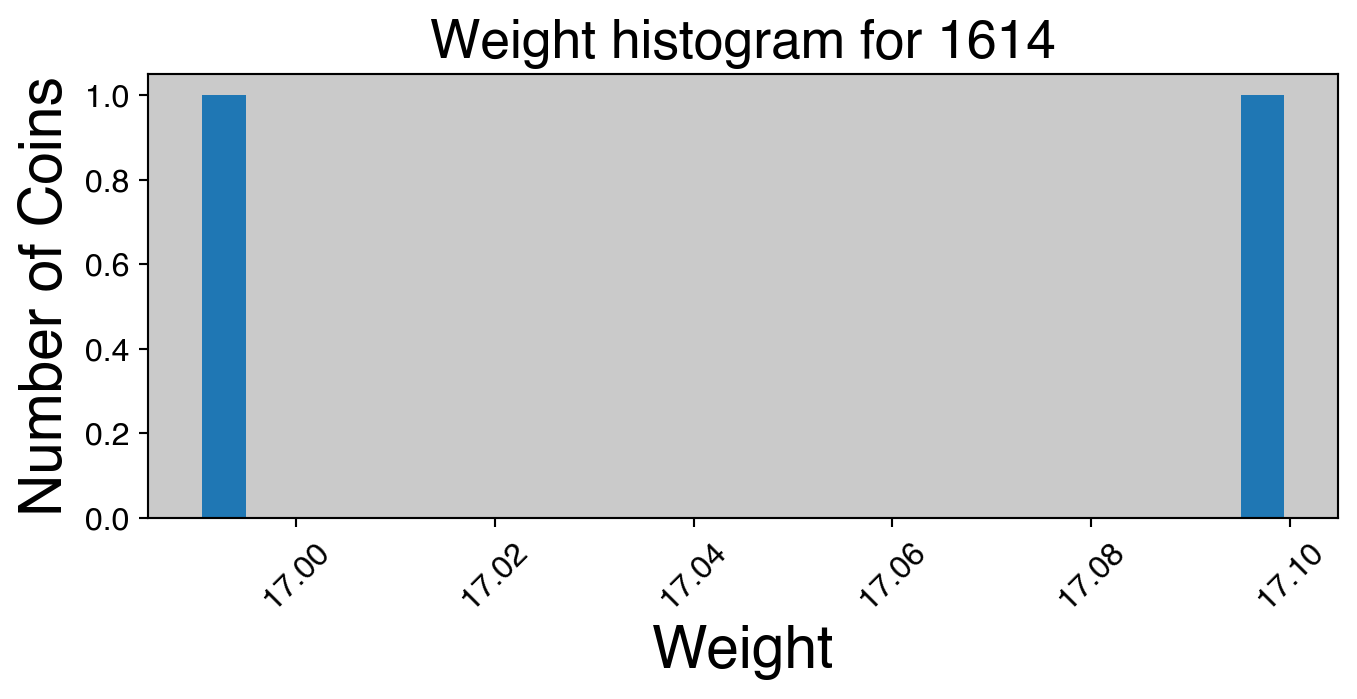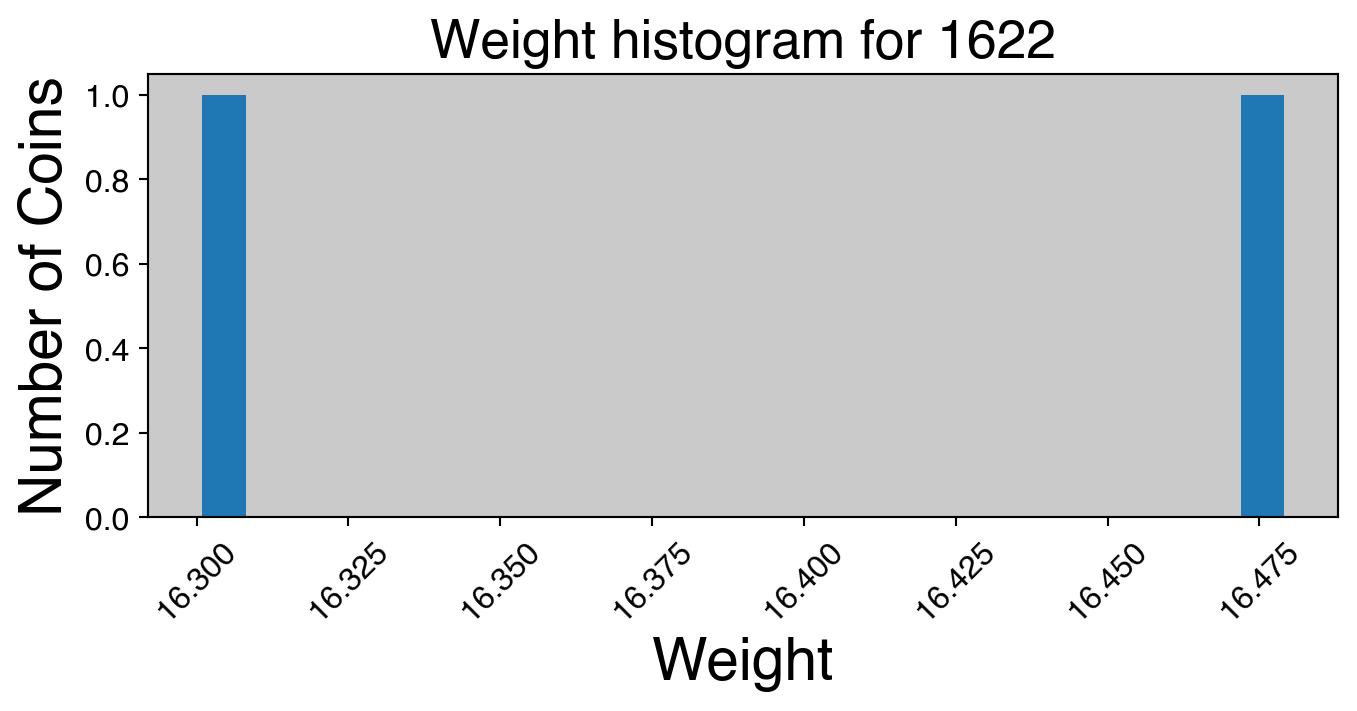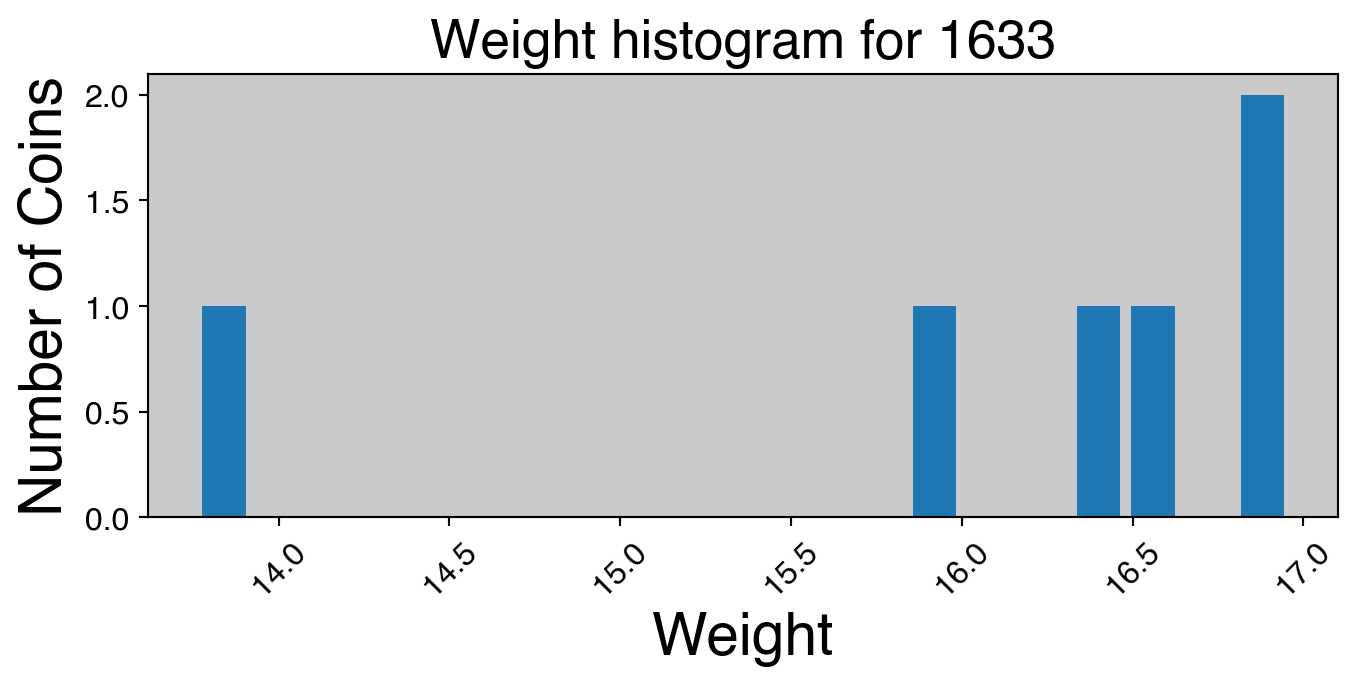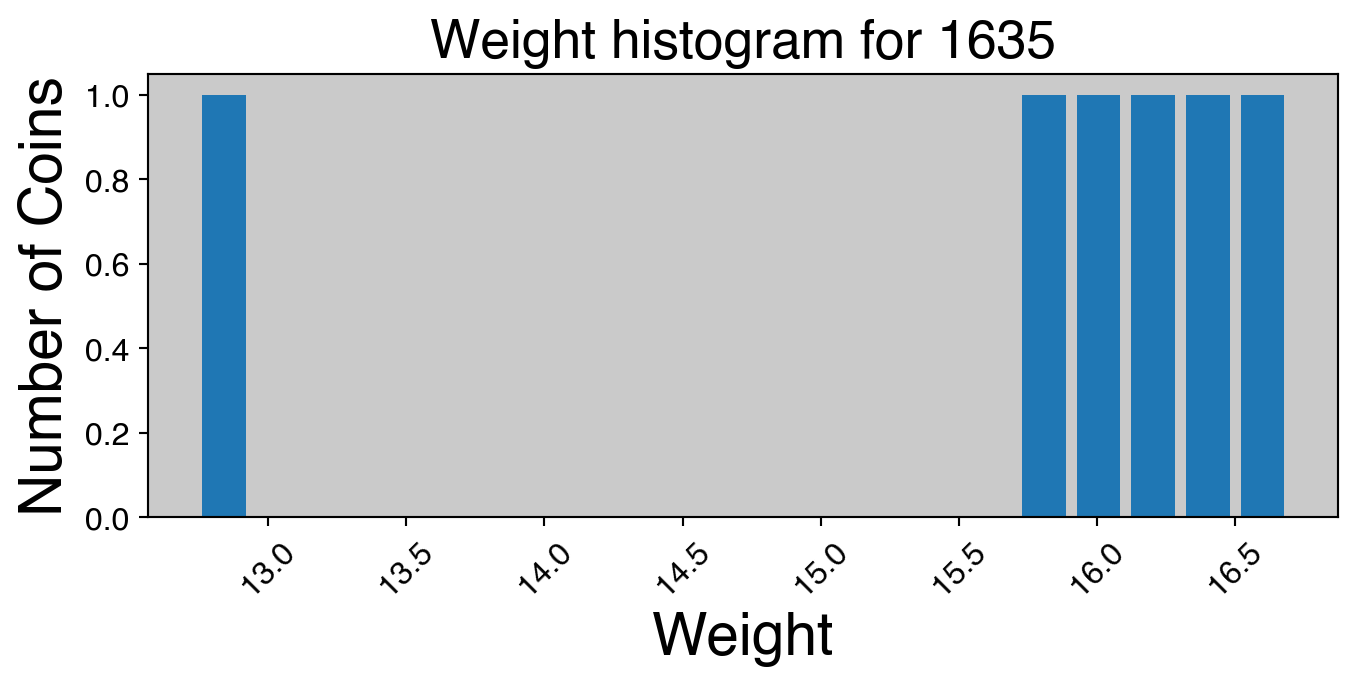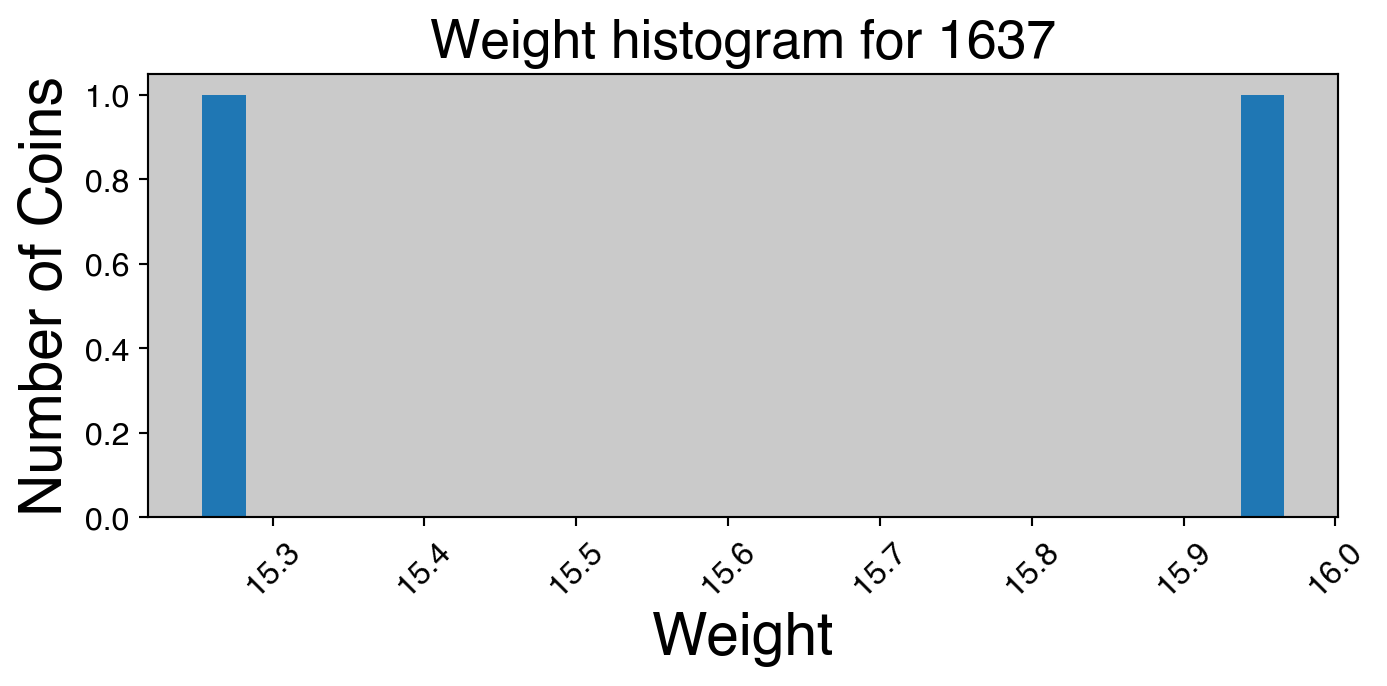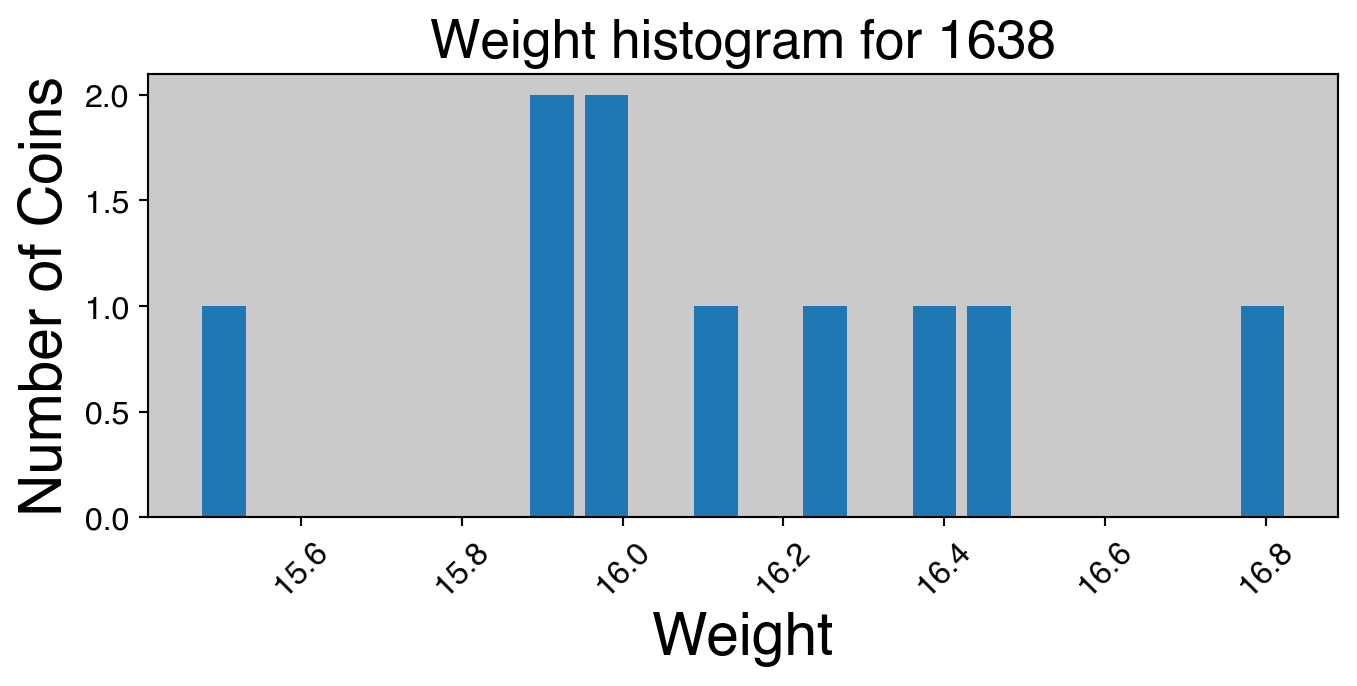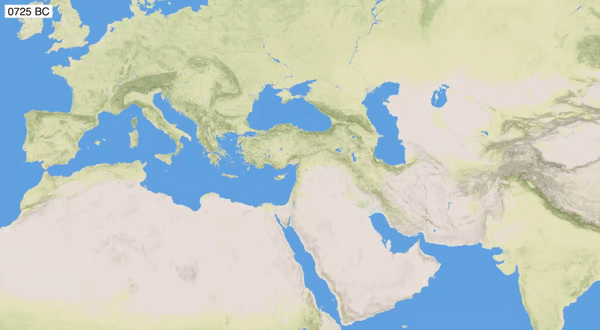| 681 |
1665 |
t_1665_2 |
tr_1665_2 |
16.580000 |
12 |
|
British Museum. #BNK,G.190 |
| 120 |
1665 |
t_1665_3 |
tr_1665_3 |
nan |
|
|
ANS Photo File, Neg. 101.10 |
| 453 |
1665 |
t_1665_5 |
tr_1665_1 |
16.730000 |
12 |
|
ANS. #1951.90.7 |
| 1019 |
1665 |
t_1665_5 |
tr_1665_4 |
16.690000 |
|
|
Gorny & Mosch Giessener Münzhandlung, Auktion 216, 15 Oktober 2013. #2309 |
| 1087 |
1665 |
t_1665_5 |
tr_1665_4 |
16.970000 |
|
|
Ira & Larry Goldberg Coins & Collectibles, Auction 67, 31 January 2012. #3139 = Lober, Demetrius I. #172 |
| 788 |
1665 |
t_1665_5 |
tr_1665_5 |
16.770000 |
1 |
29.5 |
CNG, Auction 99, 13 May 2015. #202 |
| 1079 |
1665 |
t_1665_5 |
tr_1665_5 |
nan |
|
|
Hoover, Pamphylia or Cilica, #91 |
| 47 |
1665 |
t_1665_5 |
tr_1665_5 |
16.780000 |
|
|
ANS Photo File, Bement Sale I, Naville VI-Geneva, 1925. #757 |
| 83 |
1665 |
t_1665_5 |
tr_1665_5 |
16.780000 |
|
|
ANS Photo File, Glendining, 12 February 1958. #1371 |
| 121 |
1665 |
t_1665_5 |
tr_1665_6 |
nan |
|
|
ANS Photo File, Neg. 113.6 |
| 1543 |
1665 |
t_1665_5 |
tr_1665_6 |
16.670000 |
12 |
|
SNG – Deutschland, Staatliche Münzsammlung München 10./11. Heft, 2001. #492 |
| 1391 |
1665 |
t_1665_5 |
tr_1665_7 |
16.730000 |
|
|
Noble Numismatics Pty Ltd, Auction 109, 28 July 2015. #3594 |
| 444 |
1665 |
t_1665_5 |
tr_1665_8 |
16.800000 |
12 |
|
ANS. #1951.35.2 |
| 1471 |
1665 |
t_1665_5 |
tr_1665_8 |
16.770000 |
|
|
Oclay and Seyrig, le Trésor de Mektepini en Phyrgie. #257 |
| 583 |
1666 |
t_1666_1 |
tr_1666_1 |
16.220000 |
|
|
Bibliothèque nationale de France. #btv1b10304925b |
| 578 |
1667 |
t_1667_1 |
tr_1667_1 |
16.650000 |
|
|
Bibliothèque nationale de France. #btv1b103049203 |
| 887 |
1668 |
t_1668_1 |
tr_1668_1 |
16.700000 |
|
|
Dr. Busso Peus, Nachf., catalog 318, 7-8 May 1987. #1244 |
| 443 |
1668 |
t_1668_1 |
tr_1668_1 |
16.140000 |
12 |
|
ANS. #1951.19.7 |
| 18 |
1669 |
t_1668_1 |
tr_1669_1 |
nan |
|
|
ANS Photo File, #136.14 |
| 678 |
1669 |
t_1668_1 |
tr_1669_1 |
15.760000 |
11 |
|
British Museum. #1924,1003.2 |
| 1398 |
1669 |
t_1668_1 |
tr_1669_1 |
16.724000 |
|
|
Noble Numismatics Pty. Ltd. Sale No. 77, 24-26 November 2004. #3125 |
| 582 |
1669 |
t_1668_1 |
tr_1669_2 |
15.780000 |
|
|
Bibliothèque nationale de France. #btv1b10304924w |
| 581 |
1669 |
t_1668_1 |
tr_1669_2 |
15.660000 |
|
|
Bibliothèque nationale de France. #btv1b10304923f |
| 17 |
1669 |
t_1668_1 |
tr_1669_2 |
nan |
|
|
ANS Photo File, #129.6 |
| 32 |
1669 |
t_1668_1 |
tr_1669_2 |
nan |
|
|
ANS Photo File, #neg.35.3 |
| 580 |
1669 |
t_1668_1 |
tr_1669_2 |
15.660000 |
|
|
Bibliothèque nationale de France. #btv1b103049220 |
| 635 |
1669 |
t_1668_1 |
tr_1669_2 |
16.400000 |
|
|
Birkler & Waddell LTD., Auction I, 7 December 1979. #95 |
| 1023 |
1669 |
t_1668_1 |
tr_1669_2 |
16.650000 |
|
|
Graupner, 5 November 1983. #77 |
| 1175 |
1669 |
t_1668_1 |
tr_1669_2 |
nan |
|
|
Kurpfälzische Münzhandlung, Auction XXVII, 12-15 December 1984. #77 |
| 903 |
1669 |
t_1668_1 |
tr_1669_2 |
nan |
|
|
Frank L. Kovacs, Mail Bid Sale IV, 8 August 1983. #75 |
| 1439 |
1669 |
t_1668_1 |
tr_1669_2 |
15.920000 |
1 |
|
Numismatik Lanz München, Auction 44, 16 May 1988. #191 |
| 511 |
1669 |
t_1668_1 |
tr_1669_3 |
16.600000 |
11 |
38 |
Auge, Davesne, and Ergeç, Gaziantep 1994. #10 |
| 530 |
1669 |
t_1668_1 |
tr_1669_3 |
16.730000 |
12 |
35 |
Auge, Davesne, and Ergeç, Gaziantep 1994. #9 |
| 403 |
1669 |
t_1668_1 |
tr_1669_4 |
15.480000 |
12 |
|
ANS. #1944.100.31417 |
| 1141 |
1669 |
t_1668_1 |
tr_1669_5 |
16.600000 |
|
|
Jesus Vico S.A., 11 June 1998. #67 |
| 1541 |
1669 |
t_1668_1 |
tr_1669_6 |
16.020000 |
12 |
|
SNG – Danish National Museum, Supplement, Acquisitions 1942-1996. #138 |
| 1018 |
1669 |
t_1668_1 |
tr_1669_7 |
16.120000 |
|
|
Gorny & Mosch Giessener Münzhandlung, Auction 244, 6 Mar. 2017, #183 |
| 1427 |
1669 |
t_1668_1 |
tr_1669_8 |
nan |
|
|
Numismatica Dr. Guiseppe Toderi, 1972 #2. #165 |
| 579 |
1670 |
t_1668_1 |
tr_1670_1 |
15.040000 |
|
|
Bibliothèque nationale de France. #btv1b10304921j = ANS Photo File. #35.2 |
| 493 |
1670v |
t_1668_1 |
tr_1670v_1 |
16.650000 |
|
|
Ariadne Galleries, 9 December 1981.#114 |
| 673 |
1671 |
t_1671_1 |
tr_1671_2 |
16.520000 |
1 |
|
British Museum. #1888,0614.78 |
| 30 |
1671 |
t_1671_1 |
tr_1671_3 |
nan |
|
|
ANS Photo File, #5.3-A.U.B |
| 1587 |
1671 |
t_1671_1 |
tr_1671_3 |
15.630000 |
1 |
32 |
Staatliche Museen zu Berlin. #18245313 |
| 1049 |
1671 |
t_1671_2 |
tr_1671_1 |
16.490000 |
|
|
Heidelberger Münzhandlung Herbert Grün e.K., Auction 49, 20 May 2008. #26 |
| 435 |
1672 |
t_1672_1 |
tr_1672_1 |
15.710000 |
12 |
|
ANS. #1947.98.151 |
| 633 |
1672 |
t_1672_1 |
tr_1672_1 |
16.350000 |
|
|
Bibliothèque nationale de France. #btv1b8476485b |
| 584 |
1672 |
t_1672_1 |
tr_1672_2 |
16.100000 |
|
|
Bibliothèque nationale de France. #btv1b10304926s |
| 585 |
1672 |
t_1672_1 |
tr_1672_2 |
16.620000 |
|
|
Bibliothèque nationale de France. #btv1b103049277 |
| 1101 |
1672 |
t_1672_1 |
tr_1672_2 |
16.140000 |
|
|
Italo Vecchi, LTD., Nummorum Auctiones 6. 9-10 June 1997. #374 |
| 672 |
1672 |
t_1672_1 |
tr_1672_3 |
16.620000 |
12 |
|
British Museum. #1888,0614.77 |
| 1017 |
1672 |
t_1672_1 |
tr_1672_4 |
16.190000 |
|
|
Gorny & Mosch Giessener Münzhandlung, Auction 236, 7 Mar. 2016, #235 |
| 1153 |
1672 |
t_1672_1 |
tr_1672_5 |
16.070000 |
|
|
Josiane Vedrines, 14 December 1995. #55. |
| 1218 |
1672 |
t_1672_1 |
tr_1672_6 |
nan |
|
|
Le Rider, Suse sous les Séleucides et les Parthes, 1965, Trésor 6. #619 |
| 1389 |
1672 |
t_1672_1 |
tr_1672_7 |
15.740000 |
|
|
Noble Numismatics Pty Ltd, Auction 101, 20 November 2012. #3388 |
| 1586 |
1672 |
t_1672_1 |
tr_1672_7 |
16.360000 |
12 |
34 |
Staatliche Museen zu Berlin. #18245312 |
| 1532 |
1672 |
t_1672_1 |
tr_1672_8 |
16.620000 |
|
|
Seyrig, Trésors du Levant, Trésor de Tell kotchek, 1952. #15.18 |
| 1533 |
1675 |
t_1675_1 |
tr_1675_1 |
nan |
|
|
Seyrig, Trésors du Levant, Trésor de Tell kotchek, 1952. #15.20 |
| 1478 |
1675 |
t_1675_1 |
tr_1675_1 |
15.400000 |
12 |
35 |
Princeton University Library, #659 |
| 1588 |
1675 |
t_1675_1 |
tr_1675_1 |
14.570000 |
12 |
36 |
Staatliche Museen zu Berlin. #18245319 |
| 1151 |
1676 |
t_1676_1 |
550908_r_103 |
nan |
|
|
Joseph Lepczyk, 28-30 May 1976. #1075 |
| 1608 |
1676 |
t_1676_1 |
550908_r_106 |
16.380000 |
|
|
Superior Galleries, Mail Bid Sale, 31 May - 1 June 1988. #1478 |
| 767 |
1676 |
t_1676_1 |
550908_r_108 |
16.740000 |
|
|
CNG Auction 37, 20 March 1996. #205 |
| 414 |
1676 |
t_1676_1 |
550908_r_109 |
15.680000 |
12 |
|
ANS. #1944.100.31428 |
| 437 |
1676 |
t_1676_1 |
550908_r_110 |
15.930000 |
12 |
|
ANS. #1947.98.153 |
| 415 |
1676 |
t_1676_1 |
550908_r_114 |
16.460000 |
12 |
|
ANS. #1944.100.31429 |
| 763 |
1676 |
t_1676_1 |
550908_r_115 |
16.590000 |
|
|
CNG Auction 35, 20 September 1995. #106 |
| 648 |
1676 |
t_1676_1 |
tr_1676_1 |
16.330000 |
|
|
Bourgey, 27 October 1981. #31 |
| 502 |
1676 |
t_1676_1 |
tr_1676_1 |
16.450000 |
|
|
Asta XI, 12-13 December 2002. Unknown Number |
| 323 |
1676 |
t_1676_1 |
tr_1676_14 |
nan |
|
|
ANS Photo File, Tell Kotchek, Poladian Record, 1952. Card 49. #C1 |
| 329 |
1676 |
t_1676_1 |
tr_1676_14 |
nan |
|
|
ANS Photo File, Tell Kotchek, Poladian Record, 1952. Card 50. #C1 |
| 450 |
1676 |
t_1676_1 |
tr_1676_17 |
16.230000 |
12 |
|
ANS. #1951.35.26 |
| 6 |
1676 |
t_1676_1 |
tr_1676_18 |
16.210000 |
|
|
Ader Tajan, Numimonnaies, 15 November 1991. #246 |
| 378 |
1676 |
t_1676_1 |
tr_1676_2 |
16.980000 |
|
|
ANS Photo File. Glendining, 12 February 1958. #1365 |
| 1560 |
1676 |
t_1676_1 |
tr_1676_2 |
16.980000 |
12 |
|
SNG UK. Vol III. #1468 Lockett Collection. |
| 940 |
1676 |
t_1676_1 |
tr_1676_21 |
16.720000 |
|
|
Fritz Rudolf Künker Münzenhandlung, Auction 34, 8-10 October 1996. #108 |
| 1430 |
1676 |
t_1676_1 |
tr_1676_29 |
16.590000 |
12 |
|
Numismatik Lanz München, Auction 125, 30 May 2005. #254 |
| 916 |
1676 |
t_1676_1 |
tr_1676_31 |
16.540000 |
|
|
Freeman & Sear, Mail Bid Sale 1, 10 March 1995. #156 |
| 1414 |
1676 |
t_1676_1 |
tr_1676_31 |
nan |
|
|
Numismatic Fine Arts, Auction XXXIII, May 3 1994. #1302 |
| 1192 |
1676 |
t_1676_1 |
tr_1676_35 |
nan |
|
|
Le Rider, Suse sous les Séleucides et les Parthes, 1965, Trésor 6. #615.13 |
| 383 |
1676 |
t_1676_1 |
tr_1676_35 |
16.220000 |
12 |
|
ANS Photo File. Museo Civico, Torino. #Fab.253 |
| 512 |
1676 |
t_1676_1 |
tr_1676_36 |
16.720000 |
11 |
33 |
Auge, Davesne, and Ergeç, Gaziantep 1994. #11 |
| 986 |
1676 |
t_1676_1 |
tr_1676_36 |
nan |
|
|
Glendining & Co. Garth R Drewy Collection, 7 April, 1971. #36 |
| 981 |
1676 |
t_1676_1 |
tr_1676_36 |
nan |
|
|
Glendining & Co. 8 November, 1980. #15 |
| 984 |
1676 |
t_1676_1 |
tr_1676_36 |
nan |
|
|
Glendining & Co. Collection of Dr. Garth R. Drewry. 7 April, 1971. #36 |
| 13 |
1676 |
t_1676_1 |
tr_1676_36 |
nan |
|
|
Alex G. Malloy, Auction Sale XXXI, 26 October 1990.#87 |
| 545 |
1676 |
t_1676_1 |
tr_1676_37 |
16.560000 |
|
|
Baldwin's, Auction 4, 3 May 1995. #20 |
| 1191 |
1676 |
t_1676_1 |
tr_1676_37 |
nan |
|
|
Le Rider, Suse sous les Séleucides et les Parthes, 1965, Trésor 6. #615.12 |
| 513 |
1676 |
t_1676_1 |
tr_1676_37 |
16.920000 |
11 |
35 |
Auge, Davesne, and Ergeç, Gaziantep 1994. #12 |
| 48 |
1676 |
t_1676_1 |
tr_1676_39 |
16.550000 |
|
|
ANS Photo File, Bement Sale I, Naville VI-Geneva, 1925(?). #758 |
| 1459 |
1676 |
t_1676_1 |
tr_1676_4 |
15.820000 |
12 |
|
Numismatik Lanz München, Auction 58, 21 November 1991. #203 |
| 1199 |
1676 |
t_1676_1 |
tr_1676_4 |
nan |
|
|
Le Rider, Suse sous les Séleucides et les Parthes, 1965, Trésor 6. #615.6 |
| 1037 |
1676 |
t_1676_1 |
tr_1676_4 |
16.580000 |
|
|
Harlan J. Berk, LTD. 105Th Buy or Buid Sale, 17 November 1998. #175 |
| 1429 |
1676 |
t_1676_1 |
tr_1676_4 |
16.590000 |
12 |
33 |
Numismatik Lanz München, Auction 125, 28 November 2005. #254 |
| 84 |
1676 |
t_1676_1 |
tr_1676_4 |
nan |
|
|
ANS Photo File, H. Grunthal 2, 21 May 1946. #349 |
| 392 |
1676 |
t_1676_1 |
tr_1676_9 |
16.200000 |
|
|
ANS Photo File. Tell Kotchek, 1952 (Baldwin 1971), Card 3. Unnumbered. #3 |
| 53 |
1676 |
t_1676_1 |
tr_34 |
16.350000 |
|
|
ANS Photo File, Bourgey, 21-22 June 1979. #39 |
| 115 |
1676 |
t_1676_1 |
tr_34 |
16.660000 |
|
|
ANS Photo File, Münz. & Med., FPL. 343, March 1973. #14 |
| 768 |
1676 |
t_1676_1 |
tr_35 |
16.790000 |
|
|
CNG Auction XXVII, 29 September 1993. #439 |
| 915 |
1676 |
t_1676_1 |
tr_35 |
16.420000 |
|
|
Freeman & Sear, Mail Bid Sale 1, 10 March 1995. #155 |
| 930 |
1676 |
t_1676_1 |
tr_35 |
16.590000 |
|
|
Fritz Rudolf Künker GmbH & Co. KG, Auction 104, 27 September 2005. #242 |
| 977 |
1676 |
t_1676_1 |
tr_35 |
16.670000 |
|
|
Giessener Münzhandlung, Auktion 42, 11 October 1988. #184 |
| 102 |
1676 |
t_1676_1 |
tr_35 |
16.000000 |
|
|
ANS Photo File, M Ratto, 16-17 May 1935. #8 |
| 327 |
1676 |
t_1676_1 |
tr_36 |
nan |
|
|
ANS Photo File, Tell Kotchek, Poladian Record, 1952. Card 49. #C5 |
| 328 |
1676 |
t_1676_1 |
tr_36 |
nan |
|
|
ANS Photo File, Tell Kotchek, Poladian Record, 1952. Card 49. #C6 |
| 334 |
1676 |
t_1676_1 |
tr_36 |
nan |
|
|
ANS Photo File, Tell Kotchek, Poladian Record, 1952. Card 50. #C6 |
| 68 |
1676 |
t_1676_1 |
tr_36 |
nan |
|
|
ANS Photo File, From Poladian, 8 November 1952. #547 |
| 86 |
1676 |
t_1676_1 |
tr_39 |
nan |
|
|
ANS Photo File, Harvey Hurtz Collection, Berkeley. |
| 91 |
1676 |
t_1676_1 |
tr_42 |
16.650000 |
|
|
ANS Photo File, Hirsch 92, 25-27 March 1975. #31 |
| 100 |
1676 |
t_1676_1 |
tr_44 |
nan |
|
|
ANS Photo File, Lepzyk, 28-30 May 1976. #1075 |
| 107 |
1676 |
t_1676_1 |
tr_45 |
16.520000 |
|
|
ANS Photo File, Malter, 6-7 December 1971. #287 |
| 330 |
1676 |
t_1676_1 |
tr_62 |
nan |
|
|
ANS Photo File, Tell Kotchek, Poladian Record, 1952. Card 50. #C2 |
| 324 |
1676 |
t_1676_1 |
tr_62 |
nan |
|
|
ANS Photo File, Tell Kotchek, Poladian Record, 1952. Card 49. #C2 |
| 331 |
1676 |
t_1676_1 |
tr_62 |
nan |
|
|
ANS Photo File, Tell Kotchek, Poladian Record, 1952. Card 50. #C3 |
| 332 |
1676 |
t_1676_1 |
tr_63 |
nan |
|
|
ANS Photo File, Tell Kotchek, Poladian Record, 1952. Card 50. #C4 |
| 326 |
1676 |
t_1676_1 |
tr_63 |
nan |
|
|
ANS Photo File, Tell Kotchek, Poladian Record, 1952. Card 49. #C4 |
| 333 |
1676 |
t_1676_1 |
tr_64 |
nan |
|
|
ANS Photo File, Tell Kotchek, Poladian Record, 1952. Card 50. #C5 |
| 479 |
1676 |
t_1676_10 |
550908_r_76 |
16.600000 |
1 |
|
ANS. #1952.177.5 |
| 342 |
1676 |
t_1676_10 |
tr_1676_20 |
nan |
|
|
ANS Photo File, Tell Kotchek, Poladian Record, Fall 1952. Card 12. #D2 |
| 149 |
1676 |
t_1676_10 |
tr_49 |
nan |
|
|
ANS Photo File, Tell Kotchek, Hecht ex Poladian, Fall 1952. Card 2, Unnumbered. #2 |
| 271 |
1676 |
t_1676_10 |
tr_57 |
nan |
|
|
ANS Photo File, Tell Kotchek, Poladian Record, 1952. Card 386. #D1 |
| 341 |
1676 |
t_1676_10 |
tr_57 |
nan |
|
|
ANS Photo File, Tell Kotchek, Poladian Record, Fall 1952. Card 12. #D1 |
| 456 |
1676 |
t_1676_11 |
550908_r_121 |
16.430000 |
12 |
|
ANS. #1952.177.11 |
| 793 |
1676 |
t_1676_11 |
550908_r_128 |
16.650000 |
|
35 |
CNG, e-auction 144. #73 |
| 970 |
1676 |
t_1676_11 |
550908_r_129 |
16.110000 |
|
|
Gerhard Hirsch, Katalog 125, Auktion, 21-24 April, 1981. #3100 |
| 1036 |
1676 |
t_1676_11 |
550908_r_131 |
nan |
|
|
Hans M.F. Schulman, 9-10 December 1966. #227 |
| 919 |
1676 |
t_1676_11 |
550908_r_134 |
16.350000 |
|
|
Freeman & Sear, Mail Bid Sale 10, 11 February 2004. #122 |
| 347 |
1676 |
t_1676_11 |
tr_1676_1 |
nan |
|
|
ANS Photo File, Tell Kotchek, Poladian Record, Fall 1952. Card 13. #F2 |
| 1571 |
1676 |
t_1676_11 |
tr_1676_19 |
15.580000 |
12 |
36.5 |
Staatliche Museen zu Berlin. #18245284 |
| 599 |
1676 |
t_1676_11 |
tr_1676_44 |
16.270000 |
|
|
Bibliothèque nationale de France. #btv1b10304941c |
| 348 |
1676 |
t_1676_11 |
tr_1676_7 |
nan |
|
|
ANS Photo File, Tell Kotchek, Poladian Record, Fall 1952. Card 13. #F3 |
| 379 |
1676 |
t_1676_11 |
tr_1676_8 |
nan |
|
|
ANS Photo File. H.M.F. Schulman, 9-10 December 1966. #227 |
| 936 |
1676 |
t_1676_11 |
tr_35 |
16.200000 |
|
|
Fritz Rudolf Künker GmbH & Co. KG, Auction 89, 8 March 2004. #1353 |
| 960 |
1676 |
t_1676_12 |
550908_r_69 |
16.640000 |
|
|
Gerhard Hirsch, Auktion 187, 19-23 September, 1995. #268 |
| 1381 |
1676 |
t_1676_12 |
550908_r_70 |
nan |
|
35 |
Münzen und Medaillen, Auktion XVII, 8 May 1967. #71 |
| 864 |
1676 |
t_1676_12 |
550908_r_71 |
16.270000 |
|
|
Coin Galleries, Mail and Internet Bid Sale, 10 September 2008. #548 |
| 1201 |
1676 |
t_1676_12 |
550908_r_72 |
nan |
|
|
Le Rider, Suse sous les Séleucides et les Parthes, 1965, Trésor 6. #615.9 |
| 505 |
1676 |
t_1676_12 |
550908_r_72 |
16.270000 |
|
|
Auctiones S.A (?), 18 - 19 Septeber 1985. #78 |
| 1416 |
1676 |
t_1676_12 |
550908_r_73 |
nan |
|
|
Numismatic Fine Arts, Auction XXXIII, May 3 1994. #1304 |
| 440 |
1676 |
t_1676_12 |
550908_r_74 |
16.830000 |
12 |
|
ANS. #1948.19.909 |
| 1200 |
1676 |
t_1676_12 |
550908_r_75 |
nan |
|
|
Le Rider, Suse sous les Séleucides et les Parthes, 1965, Trésor 6. #615.8 |
| 409 |
1676 |
t_1676_12 |
550908_r_93 |
16.430000 |
11 |
|
ANS. #1944.100.31423 |
| 905 |
1676 |
t_1676_12 |
550908_r_93 |
nan |
|
34 |
Frank S. Robinson, Mail Bid Sale 33, 13 September 1995. #74 |
| 1150 |
1676 |
t_1676_12 |
550908_r_93 |
16.420000 |
|
|
John R. Gainor, Summer Sale, 25 September 1994. #16 |
| 1612 |
1676 |
t_1676_12 |
tr_1676_18 |
nan |
|
|
Superior, World Coins. Winter 1976. #16 |
| 1487 |
1676 |
t_1676_12 |
tr_1676_26 |
16.640000 |
12 |
34 |
Roma Numismatics Limited, E-SALE 19, 1 Aug. 2015, #159 |
| 812 |
1676 |
t_1676_12 |
tr_1676_27 |
16.620000 |
12 |
36 |
CNG, e-auction 259. #113 |
| 1032 |
1676 |
t_1676_12 |
tr_1676_27 |
16.300000 |
|
|
H.D. Rauch, Summer Auction 2009, 17-19 September 2009. #D148 |
| 480 |
1676 |
t_1676_12 |
tr_1676_27 |
16.440000 |
1 |
|
ANS. #1952.177.6 |
| 594 |
1676 |
t_1676_12 |
tr_1676_28 |
16.110000 |
|
|
Bibliothèque nationale de France. #btv1b103049366 |
| 1441 |
1676 |
t_1676_12 |
tr_1676_28 |
16.250000 |
12 |
|
Numismatik Lanz München, Auction 48, 22 May 1989. #298 |
| 1497 |
1676 |
t_1676_12 |
tr_1676_28 |
16.910000 |
12 |
35 |
Roma Numismatics Ltd, Auction 4, 30 September 2012. #218 |
| 597 |
1676 |
t_1676_12 |
tr_1676_43 |
16.340000 |
|
|
Bibliothèque nationale de France. #btv1b10304939j |
| 598 |
1676 |
t_1676_12 |
tr_1676_43 |
15.940000 |
|
|
Bibliothèque nationale de France. #btv1b10304940x |
| 595 |
1676 |
t_1676_12 |
tr_1676_9 |
16.410000 |
|
|
Bibliothèque nationale de France. #btv1b10304937n |
| 273 |
1676 |
t_1676_12 |
tr_58 |
nan |
|
|
ANS Photo File, Tell Kotchek, Poladian Record, 1952. Card 386. #E1 |
| 343 |
1676 |
t_1676_12 |
tr_63 |
nan |
|
|
ANS Photo File, Tell Kotchek, Poladian Record, Fall 1952. Card 12. #E1 |
| 345 |
1676 |
t_1676_12 |
tr_70 |
nan |
|
|
ANS Photo File, Tell Kotchek, Poladian Record, Fall 1952. Card 12. #E3 |
| 455 |
1676 |
t_1676_13 |
550908_r_90 |
16.580000 |
12 |
|
ANS. #1952.177.10 |
| 950 |
1676 |
t_1676_13 |
tr_1676_14 |
15.910000 |
|
|
Gerhard Hirsch, Auktion 161, 22-24 February, 1989. #155 |
| 399 |
1676 |
t_1676_13 |
tr_1676_14 |
nan |
|
|
ANS Photo File. Vinchon, 14 May 1962, Pl.9. #177 |
| 434 |
1676 |
t_1676_13 |
tr_1676_14 |
15.740000 |
12 |
|
ANS. #1947.97.281 |
| 900 |
1676 |
t_1676_13 |
tr_1676_14 |
nan |
|
|
Étienne Ader, Sale 10, 14 May 1962. #177 |
| 1423 |
1676 |
t_1676_13 |
tr_1676_14 |
15.930000 |
|
|
Numismatica Ars Classica, Auction E, 4 April 1995. #2258 |
| 81 |
1676 |
t_1676_13 |
tr_1676_14 |
16.390000 |
|
|
ANS Photo File, G. Hirsch, 27-29 June 1972. #107 |
| 893 |
1676 |
t_1676_13 |
tr_1676_16 |
16.470000 |
|
|
Elayi, Trésor de la Beqa, #2 |
| 1041 |
1676 |
t_1676_13 |
tr_1676_16 |
16.690000 |
|
|
Harlan J. Berk, LTD. 58Th Buy or Bid Sale, 28 June 1989. #132 |
| 1082 |
1676 |
t_1676_13 |
tr_1676_16 |
16.290000 |
12 |
33 |
iNumis Mail Bid Sale 22, 4 June 2013. #18 |
| 1523 |
1676 |
t_1676_13 |
tr_1676_16 |
16.470000 |
|
|
Schweizerischer Bankverein, Auction 30, 15-17 September 1992. #30 |
| 705 |
1676 |
t_1676_13 |
tr_1676_16 |
16.800000 |
|
|
Christie's, 14 June 1993. #40 |
| 709 |
1676 |
t_1676_13 |
tr_1676_16 |
nan |
|
|
Clark's Ancient Coins Auction 101, March 17, 1997. #8 |
| 1173 |
1676 |
t_1676_13 |
tr_1676_16 |
nan |
|
|
Kurpfälzische Münzhandlung, Auction XXV, 1-3 December 1983. #88 |
| 1477 |
1676 |
t_1676_13 |
tr_1676_16 |
16.290000 |
|
|
Poinsignon Numismatique & Cabinet Numisatique, Sale 2, 16 March 1985. #171 |
| 1514 |
1676 |
t_1676_13 |
tr_1676_16 |
nan |
|
|
Saint Louis Art Museum. #1241991 |
| 1643 |
1676 |
t_1676_13 |
tr_1676_16 |
16.690000 |
12 |
36 |
Triskeles Auctions, Sale 16, 3 June 2016, #35 |
| 591 |
1676 |
t_1676_13 |
tr_1676_25 |
15.980000 |
|
|
Bibliothèque nationale de France. #btv1b10304933v |
| 166 |
1676 |
t_1676_13 |
tr_1676_4 |
nan |
|
|
ANS Photo File, Tell Kotchek, Hecht ex Poladian, Fall 1952. Card 5, Unnumbered. #1 |
| 265 |
1676 |
t_1676_13 |
tr_54 |
nan |
|
|
ANS Photo File, Tell Kotchek, Poladian Record, 1952. Card 35. #K1 |
| 1397 |
1676 |
t_1676_14 |
550908_r_87 |
16.704000 |
|
|
Noble Numismatics Pty. Ltd. Sale No. 76, 27-29 July 2004. #3183 |
| 924 |
1676 |
t_1676_14 |
550908_r_90 |
16.740000 |
|
|
Freeman & Sear, Mail Bid Sale 12, 28 October 2005. #75 |
| 1544 |
1676 |
t_1676_14 |
550908_r_96 |
15.500000 |
11 |
|
SNG – Deutschland, Staatliche Münzsammlung München 10./11. Heft, 2001. #493 (Acc. 72653) |
| 335 |
1676 |
t_1676_14 |
tr_1676_18 |
nan |
|
|
ANS Photo File, Tell Kotchek, Poladian Record, Fall 1952. Card 10. #A1 |
| 789 |
1676 |
t_1676_14 |
tr_1676_18 |
16.320000 |
|
|
CNG, Auction IX, 7 December, 1989. #44 |
| 412 |
1676 |
t_1676_14 |
tr_1676_18 |
16.390000 |
12 |
|
ANS. #1944.100.31426 |
| 815 |
1676 |
t_1676_14 |
tr_1676_21 |
16.400000 |
1 |
34 |
CNG, e-auction 262. #124 |
| 336 |
1676 |
t_1676_14 |
tr_1676_21 |
nan |
|
|
ANS Photo File, Tell Kotchek, Poladian Record, Fall 1952. Card 10. #A2 |
| 674 |
1676 |
t_1676_14 |
tr_1676_21 |
16.510000 |
1 |
|
British Museum. #1896,0703.155 |
| 1539 |
1676 |
t_1676_14 |
tr_1676_21 |
nan |
|
|
Seyrig, Trésors du Levant, Trésor de Tell kotchek, 1952. #15.75 |
| 338 |
1676 |
t_1676_14 |
tr_1676_22 |
nan |
|
|
ANS Photo File, Tell Kotchek, Poladian Record, Fall 1952. Card 11. #A4 |
| 907 |
1676 |
t_1676_14 |
tr_1676_22 |
nan |
|
|
Frank Sternberg Nr. 4, Juli/August 1992. #36 |
| 1522 |
1676 |
t_1676_14 |
tr_1676_22 |
16.850000 |
|
|
Schweizerische Kreditanstalt Auction 7, 27-29 April 1987. #221 |
| 1325 |
1676 |
t_1676_14 |
tr_1676_27 |
16.700000 |
|
|
Lober, Demetrius I. #229 |
| 937 |
1676 |
t_1676_14 |
tr_1676_27 |
16.560000 |
|
|
Fritz Rudolf Künker GmbH & Co. KG, Auction 89, 8 March 2004. #1354 |
| 943 |
1676 |
t_1676_14 |
tr_1676_27 |
16.560000 |
|
|
Fritz Rudolf Künker Münzenhandlung, Auction 89, 8-9 March, 2004. #1354 |
| 337 |
1676 |
t_1676_14 |
tr_1676_32 |
nan |
|
|
ANS Photo File, Tell Kotchek, Poladian Record, Fall 1952. Card 10. #A3 |
| 925 |
1676 |
t_1676_14 |
tr_1676_32 |
16.650000 |
|
|
Freeman & Sear, Mail Bid Sale 12, 28 October 2005. #76 |
| 1324 |
1676 |
t_1676_14 |
tr_1676_32 |
16.740000 |
|
|
Lober, Demetrius I. #228 |
| 406 |
1676 |
t_1676_14 |
tr_1676_32 |
16.390000 |
12 |
|
ANS. #1944.100.31420 |
| 1326 |
1676 |
t_1676_14 |
tr_1676_33 |
16.650000 |
|
|
Lober, Demetrius I. #230 |
| 588 |
1676 |
t_1676_14 |
tr_1676_36 |
16.900000 |
|
|
Bibliothèque nationale de France. #btv1b10304930h |
| 1593 |
1676 |
t_1676_14 |
tr_1676_5 |
16.500000 |
|
|
Stack's Bowers and Ponterio, Sale 163, November 2011 Baltimore Auction, 16 November 2011. #20804 |
| 476 |
1676 |
t_1676_14 |
tr_1676_5 |
16.580000 |
12 |
|
ANS. #1952.177.3 |
| 945 |
1676 |
t_1676_14 |
tr_1676_5 |
16.570000 |
|
|
Gemini, Auction I, 11 January 2005. #81 |
| 384 |
1676 |
t_1676_14 |
tr_1676_6 |
nan |
|
|
ANS Photo File. Myers Adams, No. 4, 30 October 1972. #546 |
| 387 |
1676 |
t_1676_14 |
tr_1676_6 |
16.560000 |
|
|
ANS Photo File. Tell Kotchek, 1952 (Baldwin 1971), Card 2. Unnumbered. #2 |
| 1346 |
1676 |
t_1676_14 |
tr_43 |
nan |
|
|
Münchner Münzhandlung Karl Kreß, 161, 24-25 October 1974. #194 |
| 339 |
1676 |
t_1676_14 |
tr_43 |
nan |
|
|
ANS Photo File, Tell Kotchek, Poladian Record, Fall 1952. Card 11. #A5 |
| 413 |
1676 |
t_1676_14 |
tr_43 |
15.630000 |
12 |
|
ANS. #1944.100.31427 |
| 923 |
1676 |
t_1676_14 |
tr_43 |
16.700000 |
|
|
Freeman & Sear, Mail Bid Sale 12, 28 October 2005. #74 |
| 173 |
1676 |
t_1676_14 |
tr_51 |
nan |
|
|
ANS Photo File, Tell Kotchek, Hecht ex Poladian, Fall 1952. Card 6, Unnumbered. #5 |
| 340 |
1676 |
t_1676_14 |
tr_52 |
nan |
|
|
ANS Photo File, Tell Kotchek, Poladian Record, Fall 1952. Card 11. #A6 |
| 1538 |
1676 |
t_1676_16 |
550908_r_116 |
16.350000 |
|
|
Seyrig, Trésors du Levant, Trésor de Tell kotchek, 1952. #15.74 |
| 861 |
1676 |
t_1676_16 |
tr_1676_11 |
16.780000 |
|
|
Coin Galleries, 22 July 1992. #69 |
| 389 |
1676 |
t_1676_16 |
tr_1676_11 |
15.520000 |
|
|
ANS Photo File. Tell Kotchek, 1952 (Baldwin 1971), Card 2. Unnumbered. #4 |
| 504 |
1676 |
t_1676_16 |
tr_1676_11 |
16.620000 |
|
33.5 |
Auctiones GmbH, eAuction 35, 22 March 2015. #15 |
| 1 |
1676 |
t_1676_16 |
tr_1676_11 |
16.530000 |
|
|
A Tkaelc AG, 22 April 2007. #38 |
| 142 |
1676 |
t_1676_16 |
tr_1676_11 |
nan |
|
|
ANS Photo File, Seaby II, 15 July, 1929. #287 |
| 1380 |
1676 |
t_1676_16 |
tr_1676_11 |
16.640000 |
|
|
Münzen und Medaillen Deutschland GmbH, Auction 40, 4 June 2014. #153 |
| 1598 |
1676 |
t_1676_16 |
tr_1676_11 |
16.770000 |
|
|
Stack's, 8-10 June 1994. #2101 |
| 899 |
1676 |
t_1676_16 |
tr_1676_15 |
nan |
|
|
Étienne Ader, 20 November 1961. #135 |
| 401 |
1676 |
t_1676_16 |
tr_1676_15 |
nan |
|
|
ANS Photo File. Vinchon, 20 November 1961, Pl.7. #135 |
| 1194 |
1676 |
t_1676_16 |
tr_1676_15 |
nan |
|
|
Le Rider, Suse sous les Séleucides et les Parthes, 1965, Trésor 6. #615.15 |
| 492 |
1676 |
t_1676_16 |
tr_1676_15 |
16.070000 |
|
|
Ariadne Galleries, 15 September 1982.#49 |
| 478 |
1676 |
t_1676_16 |
tr_1676_15 |
16.660000 |
12 |
|
ANS. #1952.177.4 |
| 589 |
1676 |
t_1676_16 |
tr_1676_15 |
16.350000 |
|
|
Bibliothèque nationale de France. #btv1b10304931z |
| 918 |
1676 |
t_1676_16 |
tr_1676_15 |
16.740000 |
|
|
Freeman & Sear, Mail Bid Sale 10, 11 February 2004. #121 |
| 1509 |
1676 |
t_1676_16 |
tr_1676_24 |
16.880000 |
2 |
32 |
Roma Numismatics Ltd, E-Sale 9, 28 June 2014. #120 |
| 1433 |
1676 |
t_1676_16 |
tr_1676_24 |
16.790000 |
|
|
Numismatik Lanz München, Auction 158, 5 June 2014. #248 |
| 777 |
1676 |
t_1676_16 |
tr_1676_32 |
16.850000 |
12 |
|
CNG, 75. #134 |
| 1428 |
1676 |
t_1676_16 |
tr_1676_32 |
16.320000 |
1 |
|
Numismatik Lanz München, Auction 123, 30 May 2005. #198 |
| 1322 |
1676 |
t_1676_16 |
tr_1676_38 |
16.710000 |
|
|
Lober, Demetrius I. #223 |
| 369 |
1676 |
t_1676_16 |
tr_1676_38 |
nan |
|
|
ANS Photo File. #5.1 – Leb. Mus |
| 912 |
1676 |
t_1676_16 |
tr_1676_38 |
16.710000 |
|
|
Freeman & Sear, Fixed Price List 10, Spring 2005. #32 |
| 1458 |
1676 |
t_1676_16 |
tr_1676_38 |
16.270000 |
12 |
|
Numismatik Lanz München, Auction 58, 21 November 1991. #202 |
| 405 |
1676 |
t_1676_16 |
tr_1676_38 |
16.030000 |
12 |
|
ANS. #1944.100.31419 |
| 590 |
1676 |
t_1676_16 |
tr_1676_4 |
15.940000 |
|
|
Bibliothèque nationale de France. #btv1b10304932d |
| 829 |
1676 |
t_1676_16 |
tr_1676_45 |
16.570000 |
12 |
|
CNG, Electronic Auction 257, 8 June 2011. #126 |
| 108 |
1676 |
t_1676_16 |
tr_46 |
15.900000 |
|
|
ANS Photo File, Munz Zentrum, Koln 44, 25 November 1981. #255 |
| 645 |
1676 |
t_1676_17 |
tr_1676_1 |
16.340000 |
|
|
Bourgey, 17-18 May 1984. #38 |
| 552 |
1676 |
t_1676_17 |
tr_1676_10 |
15.110000 |
12 |
32 |
Bertolami Fine Arts, ACR Auctions, E-Auction 32, 11 January 2016. #337 |
| 1658 |
1676 |
t_1676_17 |
tr_1676_17 |
16.230000 |
|
|
Wagonner, Propontis Hoard #49 |
| 1415 |
1676 |
t_1676_17 |
tr_1676_30 |
nan |
|
|
Numismatic Fine Arts, Auction XXXIII, May 3 1994. #1303 |
| 592 |
1676 |
t_1676_17 |
tr_1676_35 |
15.190000 |
|
|
Bibliothèque nationale de France. #btv1b103049349 |
| 593 |
1676 |
t_1676_17 |
tr_1676_37 |
16.130000 |
|
|
Bibliothèque nationale de France. #btv1b10304935r |
| 651 |
1676 |
t_1676_18 |
tr_1676_45 |
15.790000 |
|
|
Bourgey, 6-8 December 1978. #37 |
| 1030 |
1676 |
t_1676_2 |
550908_r_147 |
16.810000 |
|
|
H.D. Rauch, Auction 53, 28-29 November 1994. #66 |
| 99 |
1676 |
t_1676_2 |
tr_43 |
nan |
|
|
ANS Photo File, Kress 161, 29-31 October 1974. #194 |
| 1515 |
1676 |
t_1676_20 |
tr_1676_23 |
16.800000 |
|
36 |
Savoca Numismatik, 2nd Blue Auction , 28 Oct. 2017 #116 |
| 1172 |
1676 |
t_1676_3 |
550908_r_139 |
nan |
|
|
Kurpfälzische Münzhandlung, Auction XXV, 1-3 December 1983. #87 |
| 929 |
1676 |
t_1676_3 |
550908_r_139 |
16.400000 |
|
|
Freeman & Sear, Mail Bid Sale 14, 21 June 2007. #142 |
| 514 |
1676 |
t_1676_3 |
550908_r_140 |
16.580000 |
12 |
34 |
Auge, Davesne, and Ergeç, Gaziantep 1994. #13 |
| 975 |
1676 |
t_1676_3 |
550908_r_140 |
16.690000 |
|
|
Gerhard Hirsch, Katalog XLII, 21-23 Juni, 1965. #1099. |
| 1106 |
1676 |
t_1676_3 |
550908_r_140 |
16.570000 |
|
|
Jean Elsen & ses Fils S.A., Auction 110, 10 September 2011. #165 |
| 1607 |
1676 |
t_1676_3 |
550908_r_142 |
16.570000 |
|
|
Superior Galleries, Mail Bid Sale, 21 September 1990. #12 |
| 411 |
1676 |
t_1676_3 |
550908_r_143 |
15.610000 |
12 |
|
ANS. #1944.100.31425 |
| 1551 |
1676 |
t_1676_3 |
550908_r_144 |
15.840000 |
12 |
|
SNG – Greece 4, 2005. #426 |
| 319 |
1676 |
t_1676_3 |
t_60 |
nan |
|
|
ANS Photo File, Tell Kotchek, Poladian Record, 1952. Card 48. #G2 |
| 320 |
1676 |
t_1676_3 |
t_61 |
nan |
|
|
ANS Photo File, Tell Kotchek, Poladian Record, 1952. Card 48. #G3 |
| 318 |
1676 |
t_1676_3 |
tr_1676_10 |
nan |
|
|
ANS Photo File, Tell Kotchek, Poladian Record, 1952. Card 48. #G1 |
| 388 |
1676 |
t_1676_3 |
tr_1676_10 |
16.330000 |
|
|
ANS Photo File. Tell Kotchek, 1952 (Baldwin 1971), Card 2. Unnumbered. #3 |
| 497 |
1676 |
t_1676_3 |
tr_1676_10 |
15.900000 |
12 |
34.2 |
Ashmolean Museum, Oxford, Heberden Coin Room HCR24023 |
| 965 |
1676 |
t_1676_3 |
tr_1676_41 |
16.450000 |
|
|
Gerhard Hirsch, Auktion 289, 2 May, 2013. #243 |
| 691 |
1676 |
t_1676_3 |
tr_1676_42 |
16.710000 |
12 |
35.5 |
CGB.fr, e-Monnaies Juin 2015, 30 June 2015, #356124 |
| 917 |
1676 |
t_1676_3 |
tr_1676_42 |
16.670000 |
|
|
Freeman & Sear, Mail Bid Sale 10, 11 February 2004. #120 |
| 790 |
1676 |
t_1676_3 |
tr_1676_42 |
16.570000 |
|
|
CNG, Auction XI, 3 May, 1990. #40 |
| 1103 |
1676 |
t_1676_3 |
tr_1676_42 |
16.590000 |
|
|
Jaques Schulman, N.V., 12 November 1971. #3035 |
| 481 |
1676 |
t_1676_4 |
550908_r_137 |
16.440000 |
12 |
|
ANS. #1952.177.7 |
| 1154 |
1676 |
t_1676_4 |
550908_r_88 |
16.270000 |
|
|
Josiane Vedrines, 4 November 1992. #27 |
| 538 |
1676 |
t_1676_4 |
tr_1676_13 |
16.240000 |
|
|
Áureo & Calicó, Auction 269, 7 July 2015. #2008 |
| 1508 |
1676 |
t_1676_4 |
tr_1676_25 |
16.560000 |
12 |
35 |
Roma Numismatics Ltd, E-Sale 7, 26 April 2014. #377 |
| 385 |
1676 |
t_1676_4 |
tr_1676_5 |
16.430000 |
|
|
ANS Photo File. Peus, 20 June 1960. #786 |
| 1382 |
1676 |
t_1676_4 |
tr_1676_5 |
16.430000 |
|
34.5 |
Münzhandlung Dr. Busso Peus, catalog 261, 20-21 June 1960. #786 |
| 150 |
1676 |
t_1676_4 |
tr_50 |
nan |
|
|
ANS Photo File, Tell Kotchek, Hecht ex Poladian, Fall 1952. Card 2, Unnumbered. #3 |
| 264 |
1676 |
t_1676_4 |
tr_53 |
nan |
|
|
ANS Photo File, Tell Kotchek, Poladian Record, 1952. Card 35. #J1 |
| 786 |
1676 |
t_1676_5 |
550908_r_125 |
16.580000 |
1 |
34 |
CNG, Auction 88, 14 September 2011. #322 |
| 543 |
1676 |
t_1676_5 |
550908_r_128 |
16.630000 |
|
|
Aureo, Subasta Numismatica, 30 June – 1 July 1999. #2030 |
| 643 |
1676 |
t_1676_5 |
550908_r_135 |
15.780000 |
|
|
Bourgey, 11-12 March 1985. #18 |
| 942 |
1676 |
t_1676_5 |
tr_1676_19 |
16.200000 |
|
|
Fritz Rudolf Künker Münzenhandlung, Auction 89, 8-9 March, 2004. #1353 |
| 1376 |
1676 |
t_1676_5 |
tr_1676_34 |
17.230000 |
|
|
Münzen und Medaillen AG, Oktober 1983. #20 |
| 761 |
1676 |
t_1676_5 |
tr_1676_40 |
16.580000 |
1 |
34 |
CNG 88. #322 |
| 938 |
1676 |
t_1676_5 |
tr_1676_40 |
16.710000 |
|
|
Fritz Rudolf Künker GmbH & Co. KG, eLive Auction 43, 7 Dec. 2016, #26 |
| 61 |
1676 |
t_1676_5 |
tr_35 |
15.900000 |
|
|
ANS Photo File, Dehaual Stockholm #5 |
| 88 |
1676 |
t_1676_5 |
tr_40 |
nan |
|
|
ANS Photo File, Harvey Hurtz Collection, Berkeley. Card 3 |
| 146 |
1676 |
t_1676_5 |
tr_43 |
nan |
|
|
ANS Photo File, Tell Kotchek, Hecht ex Poladian, Fall 1952. Card 1, Unnumbered. #2 |
| 147 |
1676 |
t_1676_5 |
tr_48 |
nan |
|
|
ANS Photo File, Tell Kotchek, Hecht ex Poladian, Fall 1952. Card 1, Unnumbered. #3 |
| 1504 |
1676 |
t_1676_6 |
tr_1676_20 |
16.580000 |
1 |
31 |
Roma Numismatics Ltd, E-Sale 11, 23 August 2014. #26 |
| 1570 |
1676 |
t_1676_6 |
tr_1676_20 |
15.670000 |
12 |
34.5 |
Staatliche Museen zu Berlin. #18245277 |
| 1323 |
1676 |
t_1676_6 |
tr_1676_39 |
16.540000 |
|
|
Lober, Demetrius I. #226 |
| 269 |
1676 |
t_1676_6 |
tr_1676_39 |
nan |
|
|
ANS Photo File, Tell Kotchek, Poladian Record, 1952. Card 36. #H4 |
| 270 |
1676 |
t_1676_6 |
tr_1676_39 |
nan |
|
|
ANS Photo File, Tell Kotchek, Poladian Record, 1952. Card 36. #H5 |
| 72 |
1676 |
t_1676_6 |
tr_1676_39 |
nan |
|
|
ANS Photo File, From Poladian, 8 November 1952. #656 |
| 920 |
1676 |
t_1676_6 |
tr_1676_39 |
16.540000 |
|
|
Freeman & Sear, Mail Bid Sale 11, 23 November 2004. #74 |
| 266 |
1676 |
t_1676_6 |
tr_39 |
nan |
|
|
ANS Photo File, Tell Kotchek, Poladian Record, 1952. Card 36. #H1 |
| 267 |
1676 |
t_1676_6 |
tr_55 |
nan |
|
|
ANS Photo File, Tell Kotchek, Poladian Record, 1952. Card 36. #H2 |
| 408 |
1676 |
t_1676_6 |
tr_55 |
15.790000 |
12 |
|
ANS. #1944.100.31422 |
| 268 |
1676 |
t_1676_6 |
tr_56 |
nan |
|
|
ANS Photo File, Tell Kotchek, Poladian Record, 1952. Card 36. #H3 |
| 359 |
1676 |
t_1676_6 |
tr_56 |
nan |
|
|
ANS Photo File. # 4.5 A.U.B. |
| 482 |
1676 |
t_1676_6 |
tr_56 |
16.610000 |
12 |
|
ANS. #1952.177.8 |
| 1193 |
1676 |
t_1676_6 |
tr_56 |
nan |
|
|
Le Rider, Suse sous les Séleucides et les Parthes, 1965, Trésor 6. #615.14 |
| 410 |
1676 |
t_1676_8 |
550908_r_82 |
16.120000 |
12 |
|
ANS. #1944.100.31424 |
| 801 |
1676 |
t_1676_8 |
550908_r_83 |
16.610000 |
|
32 |
CNG, e-auction 179. #15 |
| 684 |
1676 |
t_1676_8 |
tr_1676_3 |
16.630000 |
12 |
|
British Museum. #RPK,p80E.65.AleIII |
| 380 |
1676 |
t_1676_8 |
tr_1676_3 |
16.650000 |
|
|
ANS Photo File. Head's Guide British Museum. #48 |
| 1135 |
1676 |
t_1676_8 |
tr_1676_5 |
16.770000 |
|
|
Jean Elsen, Public auction, 69, 16 Mars 2002. #147 |
| 483 |
1676 |
t_1676_8 |
tr_1676_5 |
16.300000 |
12 |
|
ANS. #1952.177.9 |
| 1645 |
1676 |
t_1676_8 |
tr_1676_5 |
16.790000 |
|
34 |
UBS Gold & Numismatics, Auction 59, 27 January 2004. #5381 |
| 1063 |
1676 |
t_1676_8 |
tr_41 |
nan |
|
33 |
Heritage Auctions, Inc., 2006 January (HWCA) New York Signature Auction, 9 January 2006. #12009 = ANS Photo File, Tell Kotchek, Poladian Record, 1952. Card 35. #I1 |
| 262 |
1676 |
t_1676_8 |
tr_41 |
nan |
|
|
ANS Photo File, Tell Kotchek, Poladian Record, 1952. Card 35. #I1 |
| 263 |
1676 |
t_1676_8 |
tr_52 |
nan |
|
|
ANS Photo File, Tell Kotchek, Poladian Record, 1952. Card 35. #I2 |
| 1142 |
1678 |
t_1676_8 |
550908_r_68 |
16.800000 |
|
|
Jesus Vico S.A., 27 February (No year given). #113 |
| 459 |
1678 |
t_1676_8 |
550908_r_68 |
16.250000 |
12 |
|
ANS. #1952.177.14 |
| 995 |
1678 |
t_1678_2 |
550908_r_53 |
16.400000 |
|
|
Gorny & Mosch Auktion 191, 11-12 Oktober 2010. #1297 |
| 1549 |
1678 |
t_1678_2 |
550908_r_54 |
15.880000 |
12 |
|
SNG – Finland The Erkki Keckman Collection Part II, 1999. #15 |
| 1653 |
1678 |
t_1678_2 |
550908_r_55 |
16.520000 |
|
|
Victor Gadoury, 26-27 Novembre, 1985. #25 |
| 484 |
1678 |
t_1678_2 |
550908_r_57 |
16.470000 |
12 |
|
ANS. #1953.4.1 |
| 64 |
1678 |
t_1678_4 |
550908_r_36 |
nan |
|
|
ANS Photo File, Eric Von Post's Collection, Stockholm. Lower Left |
| 300 |
1678 |
t_1678_4 |
550908_r_37 |
nan |
|
|
ANS Photo File, Tell Kotchek, Poladian Record, 1952. Card 44. #B1 |
| 1152 |
1678 |
t_1678_4 |
550908_r_37 |
nan |
|
|
Joseph Lepczyk, 43 Public Auction & Mail Bid Sale, 20-21 November (No year given). #569 |
| 458 |
1678 |
t_1678_4 |
550908_r_38 |
16.370000 |
12 |
|
ANS. #1952.177.13 |
| 301 |
1678 |
t_1678_4 |
550908_r_40 |
nan |
|
|
ANS Photo File, Tell Kotchek, Poladian Record, 1952. Card 44. #B2 |
| 302 |
1678 |
t_1678_4 |
550908_r_41 |
nan |
|
|
ANS Photo File, Tell Kotchek, Poladian Record, 1952. Card 44. #B3 |
| 846 |
1678 |
t_1678_4 |
550908_r_42 |
16.850000 |
|
|
CNG, Mail Bid Sale 67, 22 September 2004. #424 |
| 1186 |
1678 |
t_1678_4 |
550908_r_52 |
nan |
|
|
Le Rider, Suse sous les Séleucides et les Parthes, 1965, Trésor 6. #614.8 |
| 416 |
1678 |
t_1678_5 |
550908_r_50 |
15.570000 |
12 |
|
ANS. #1944.100.31430 |
| 831 |
1678 |
t_1678_5 |
550908_r_58 |
16.440000 |
12 |
36 |
CNG, Electronic Auction 260, 20 July 2011. #224 |
| 1545 |
1678 |
t_1678_5 |
550908_r_58 |
15.890000 |
11 |
|
SNG – Deutschland, Staatliche Münzsammlung München 10./11. Heft, 2001. #494 (Acc. 22717) |
| 867 |
1678 |
t_1678_5 |
550908_r_60 |
16.800000 |
|
|
Craig A. Whitford Numismatic Auctions, 28 November 1994. #60 |
| 808 |
1678 |
t_1678_5 |
550908_r_60 |
16.450000 |
12 |
32 |
CNG, e-auction 224. #190 |
| 1107 |
1678 |
t_1678_5 |
550908_r_60 |
16.420000 |
|
|
Jean Elsen & ses Fils S.A., Auction 110, 10 September 2011. #166 |
| 1164 |
1678 |
t_1678_5 |
550908_r_61 |
16.290000 |
|
37 |
Kunst und Münzen A.G., Asta XXVIII, 18-20 Gigugno 1992. #178 |
| 894 |
1678 |
t_1678_5 |
550908_r_61 |
16.300000 |
|
|
Elayi, Trésor de la Beqa, #3 |
| 1039 |
1678 |
t_1678_5 |
550908_r_64 |
nan |
|
|
Harlan J. Berk, LTD. 2 November (No Year Given). #10 |
| 639 |
1678 |
t_1678_5 |
550908_r_65 |
16.050000 |
|
|
Bonhams, sale 22662, 29-30 March, no year given. #110 |
| 1184 |
1678 |
t_1678_5 |
550908_r_66 |
nan |
|
|
Le Rider, Suse sous les Séleucides et les Parthes, 1965, Trésor 6. #614.6 |
| 447 |
1678 |
t_1678_5 |
550908_r_66 |
16.190000 |
12 |
|
ANS. #1951.35.23 |
| 698 |
1678 |
t_1678_5 |
550908_r_66 |
16.380000 |
12 |
36 |
CGB.fr, MONNAIES 16, 31 December 2002. #57 |
| 1460 |
1678 |
t_1678_5 |
550908_r_66 |
15.740000 |
12 |
|
Numismatik Lanz München, Auction 58, 21 November 1991. #204 |
| 1005 |
1678 |
t_1678_6 |
550908_r_33 |
16.290000 |
|
|
Gorny & Mosch Giessener Münzhandlung, Auction 170, 13 October 2008. #1294 |
| 457 |
1678 |
t_1678_6 |
550908_r_34 |
16.640000 |
12 |
|
ANS. #1952.177.12 |
| 296 |
1678 |
t_1678_9 |
550908_r_45 |
nan |
|
|
ANS Photo File, Tell Kotchek, Poladian Record, 1952. Card 43. #C1 |
| 515 |
1678 |
t_1678_9 |
550908_r_45 |
16.580000 |
12 |
34 |
Auge, Davesne, and Ergeç, Gaziantep 1994. #14 |
| 297 |
1678 |
t_1678_9 |
550908_r_47 |
nan |
|
|
ANS Photo File, Tell Kotchek, Poladian Record, 1952. Card 43. #C2 |
| 926 |
1678 |
t_1678_9 |
550908_r_47 |
16.570000 |
|
|
Freeman & Sear, Mail Bid Sale 12, 28 October 2005. #77 |
| 1076 |
1678 |
t_1678_9 |
550908_r_47 |
16.260000 |
|
|
Heritage World Coin Auctions, New York Signature Sale, 2 January 2011. #24429 |
| 1183 |
1678 |
t_1678_9 |
550908_r_48 |
nan |
|
|
Le Rider, Suse sous les Séleucides et les Parthes, 1965, Trésor 6. #614.5 |
| 448 |
1678 |
t_1678_9 |
550908_r_48 |
16.150000 |
12 |
|
ANS. #1951.35.24 |
| 766 |
1678 |
t_1678_9 |
550908_r_48 |
16.080000 |
|
|
CNG Auction 36, 5-6 December 1995. #1823 |
| 41 |
1678 |
t_1678_9 |
550908_r_50 |
16.180000 |
|
|
ANS Photo File, Aecahn, 26 November 1930. #1233 |
| 1180 |
1678 |
t_1678_9 |
550908_r_57 |
nan |
|
|
Le Rider, Suse sous les Séleucides et les Parthes, 1965, Trésor 6. #614.1 |
| 438 |
1678 |
t_1678_9 |
550908_r_57 |
16.280000 |
12 |
|
ANS. #1947.98.154 |
| 517 |
1679 |
t_1679_1 |
550908_r_167 |
16.520000 |
12 |
33 |
Auge, Davesne, and Ergeç, Gaziantep 1994. #16 |
| 1207 |
1679 |
t_1679_1 |
550908_r_169 |
nan |
|
|
Le Rider, Suse sous les Séleucides et les Parthes, 1965, Trésor 6. #616.7 |
| 1171 |
1679 |
t_1679_1 |
550908_r_170 |
nan |
|
|
Kurpfälzische Münzhandlung, Auction XXIV, 17-19 May 1983. #62 |
| 1080 |
1679 |
t_1679_3 |
550908_r_149 |
nan |
|
|
Imperial, Bid or Buy Sale, 12 January 1993. #15 |
| 1035 |
1679 |
t_1679_3 |
550908_r_150 |
nan |
|
|
Hans M.F. Schulman, 20-25 November 1964. #1202 |
| 117 |
1679 |
t_1679_3 |
550908_r_161 |
16.200000 |
12 |
|
ANS Photo File, Museo Civico, Torino, (Fab 2531) |
| 62 |
1680 |
t_1679_1 |
550908_r_159 |
16.580000 |
|
|
ANS Photo File, Dehaual Stockholm #6 |
| 1002 |
1680 |
t_1679_1 |
550908_r_169 |
16.820000 |
|
|
Gorny & Mosch Giessener Münzhandlung, Auction 142, 10 October 2005. #1355 |
| 426 |
1680 |
t_1679_1 |
550908_r_170 |
15.410000 |
12 |
|
ANS. #1944.100.31440 |
| 1208 |
1680 |
t_1679_1 |
550908_r_171 |
nan |
|
|
Le Rider, Suse sous les Séleucides et les Parthes, 1965, Trésor 6. #616.8 |
| 1476 |
1680 |
t_1679_1 |
550908_r_175 |
16.980000 |
|
|
Poinsignon Numismatique & Cabinet Numisatique, Sale 2, 16 March 1985. #170 |
| 1140 |
1680 |
t_1679_1 |
550908_r_176 |
nan |
|
|
Jeffery Hoare, Sale 29, 25-26 February 1994. #11 |
| 433 |
1680 |
t_1679_1 |
550908_r_176 |
16.430000 |
12 |
|
ANS. #1946.124.3 |
| 423 |
1680 |
t_1679_1 |
550908_r_177 |
16.590000 |
12 |
|
ANS. #1944.100.31437 |
| 869 |
1680 |
t_1679_1 |
550908_r_178 |
nan |
|
|
Craig A. Whitford, 26 April 1993. #91 |
| 422 |
1680 |
t_1679_1 |
550908_r_178 |
16.660000 |
12 |
|
ANS. #1944.100.31436 |
| 425 |
1680 |
t_1679_1 |
550908_r_180 |
16.430000 |
12 |
|
ANS. #1944.100.31439 |
| 1091 |
1680 |
t_1679_1 |
550908_r_180 |
nan |
|
|
Ira & Larry Goldberg Coins & Collectibles, Auction 69, 29 May 2012. #3094 |
| 699 |
1680 |
t_1679_1 |
550908_r_181 |
15.910000 |
12 |
39 |
CGB.fr, MONNAIES 24, 24 June 2005. #90 |
| 1437 |
1680 |
t_1679_1 |
550908_r_182 |
16.670000 |
12 |
|
Numismatik Lanz München, Auction 38, 24 November 1986. #234 |
| 134 |
1680 |
t_1679_1 |
550908_r_183 |
15.880000 |
12 |
|
ANS Photo File, Numismatica Wien, 20-21 November, 1975. #54 |
| 441 |
1680 |
t_1679_1 |
550908_r_184 |
16.260000 |
12 |
|
ANS. #1948.19.910 |
| 997 |
1680 |
t_1679_3 |
550908_r_151 |
16.780000 |
|
|
Gorny & Mosch Auktion 196, 7-9 März 2011. #1417 |
| 1174 |
1680 |
t_1679_3 |
550908_r_152 |
nan |
|
|
Kurpfälzische Münzhandlung, Auction XXV, 1-3 December 1983. #89 |
| 1463 |
1680 |
t_1679_3 |
550908_r_153 |
15.830000 |
12 |
|
Numismatik Lanz München, Auction 58, 21 November 1991. #207 |
| 1465 |
1680 |
t_1679_3 |
550908_r_154 |
16.230000 |
12 |
|
Numismatik Lanz München, Auction 62, 26 November 1992. #315 |
| 1546 |
1680 |
t_1679_3 |
550908_r_155 |
15.040000 |
11 |
|
SNG – Deutschland, Staatliche Münzsammlung München 10./11. Heft, 2001. #495 (Acc. 22716) |
| 468 |
1680 |
t_1679_3 |
550908_r_157 |
16.430000 |
12 |
|
ANS. #1952.177.22 |
| 65 |
1680 |
t_1679_3 |
550908_r_158 |
nan |
|
|
ANS Photo File, Eric Von Post's Collection, Stockholm. Lower Right |
| 1129 |
1680 |
t_1679_3 |
550908_r_158 |
16.420000 |
|
|
Jean Elsen, Public auction, 11 & 13 Decembre 1999. #166 |
| 1206 |
1680 |
t_1679_3 |
550908_r_160 |
nan |
|
|
Le Rider, Suse sous les Séleucides et les Parthes, 1965, Trésor 6. #616.6 |
| 1594 |
1680 |
t_1679_3 |
550908_r_162 |
16.890000 |
|
|
Stack's Bowers and Ponterio, Sale 164, N.Y.I.N.C Auction, 6 January 2012. #154 |
| 1319 |
1680 |
t_1680_1 |
550908_r_187 |
16.510000 |
|
|
Lober, Demetrius I. #180 |
| 518 |
1680 |
t_1680_1 |
550908_r_187 |
16.620000 |
11 |
33 |
Auge, Davesne, and Ergeç, Gaziantep 1994. #17 |
| 424 |
1680 |
t_1680_1 |
550908_r_189 |
16.590000 |
12 |
|
ANS. #1944.100.31438 |
| 1536 |
1680 |
t_1680_1 |
550908_r_189 |
16.470000 |
|
|
Seyrig, Trésors du Levant, Trésor de Tell kotchek, 1952. #15.27 |
| 1204 |
1680 |
t_1680_2 |
550908_r_191 |
nan |
|
|
Le Rider, Suse sous les Séleucides et les Parthes, 1965, Trésor 6. #616.3 |
| 519 |
1680 |
t_1680_2 |
550908_r_191 |
16.800000 |
12 |
33 |
Auge, Davesne, and Ergeç, Gaziantep 1994. #18 |
| 817 |
1680 |
t_1680_2 |
550908_r_191 |
16.020000 |
12 |
33 |
CNG, e-auction 263. #101 |
| 1097 |
1680 |
t_1680_2 |
550908_r_191 |
16.530000 |
|
|
Ira & Larry Goldberg, Pre-long Beach Auction 69, 29-30 May 2012. #3073 |
| 870 |
1680 |
t_1680_2 |
550908_r_192 |
16.620000 |
|
|
Davissons Ltd., Auction 14, 15 November 2000. #136 |
| 1534 |
1683 |
t_1683_1 |
550908_r_193 |
16.750000 |
|
|
Seyrig, Trésors du Levant, Trésor de Tell kotchek, 1952. #15.21 |
| 962 |
1683 |
t_1683_2 |
550908_r_194 |
16.750000 |
|
|
Gerhard Hirsch, Auktion 198, 11-13 February, 1998. #134 |
| 446 |
1683 |
t_1683_2 |
550908_r_196 |
16.110000 |
12 |
|
ANS. #1951.35.22 |
| 1634 |
1683 |
t_1683_2 |
550908_r_196 |
16.910000 |
|
36 |
Tom Cederlind, Catalog 158, 28 March 2011. #99 |
| 421 |
1683 |
t_1683_2 |
550908_r_197 |
16.480000 |
12 |
|
ANS. #1944.100.31435 |
| 520 |
1683 |
t_1683_2 |
550908_r_200 |
16.810000 |
12 |
36 |
Auge, Davesne, and Ergeç, Gaziantep 1994. #19 |
| 779 |
1683 |
t_1683_2 |
550908_r_200 |
16.570000 |
12 |
|
CNG, 76. #291 |
| 676 |
1685 |
t_1685_1 |
550908_r_214 |
15.820000 |
12 |
|
British Museum. #1910,1104.52 |
| 1029 |
1686 |
t_1686_1 |
550908_r_222 |
16.730000 |
|
|
H.D. Rauch, Auction 53, 28-29 November 1994. #65 |
| 1388 |
1686 |
t_1686_2 |
550908_r_225 |
nan |
|
|
Nihon Coin Auction No. 7. #14 |
| 807 |
1686 |
t_1686_2 |
550908_r_225 |
16.080000 |
12 |
34 |
CNG, e-auction 203. #63 |
| 1100 |
1686 |
t_1686_2 |
550908_r_225 |
16.180000 |
|
|
Italo Vecchi, LTD., Nummorum Auctiones 15. 15 June 1999. #155 |
| 1424 |
1686 |
t_1686_2 |
550908_r_227 |
16.950000 |
|
|
Numismatica Ars Classica, Auction F, 17 April 1996. #1193 |
| 1425 |
1686 |
t_1686_2 |
550908_r_229 |
16.580000 |
|
|
Numismatica Ars Classica, Auction H, 30 April 1998. #1276 |
| 94 |
1686 |
t_1686_2 |
550908_r_229 |
16.400000 |
|
|
ANS Photo File, K. Kress, 3 October 1972. #328 |
| 1602 |
1686 |
t_1686_2 |
550908_r_229 |
nan |
|
|
Stephen M Houston Fixed Price List 54. #4 |
| 854 |
1686 |
t_1686_2 |
550908_r_230 |
17.090000 |
12 |
|
CNG, Triton VIII, 11-12 January 2005. #168 |
| 29 |
1686 |
t_1686_2 |
550908_r_230 |
nan |
|
|
ANS Photo File, #4.6-Leb.Mus. |
| 95 |
1686 |
t_1686_2 |
550908_r_231 |
16.100000 |
|
|
ANS Photo File, Karl Kress, 2 April 1973 |
| 1542 |
1686 |
t_1686_2 |
550908_r_231 |
15.870000 |
1 |
|
SNG – Deutschland, Münzsammlung der Universität Tübingen, 2 Heft, 1982. #1100. |
| 1557 |
1686 |
t_1686_2 |
550908_r_232 |
16.530000 |
12 |
|
SNG – Sweden II, Part 2, 1980. #1014 |
| 452 |
1686 |
t_1686_2 |
550908_r_233 |
16.370000 |
12 |
|
ANS. #1951.35.28 |
| 882 |
1686 |
t_1686_2 |
550908_r_233 |
16.550000 |
|
|
Dr. Busso Peus, Nachf., catalog 280, 15-17 March 1978. #263 |
| 1332 |
1686 |
t_1686_2 |
550908_r_233 |
16.540000 |
|
|
M. Jean Vinchon, Sale 7, 9-10 Decemeber 1993. #84 |
| 803 |
1686 |
t_1686_2 |
550908_r_234 |
16.090000 |
|
33 |
CNG, e-auction 179. #17 |
| 489 |
1686 |
t_1686_2 |
550908_r_234 |
16.470000 |
12 |
|
ANS. #1984.5.108 |
| 783 |
1686 |
t_1686_2 |
550908_r_234 |
16.630000 |
|
|
CNG, Auction 60, 22 May 2002. #297 |
| 12 |
1686 |
t_1686_2 |
550908_r_235 |
nan |
|
|
Alex G. Malloy, Auction Sale XXXI, 26 October 1990.#86 |
| 1438 |
1686 |
t_1686_2 |
550908_r_235 |
16.450000 |
1 |
|
Numismatik Lanz München, Auction 42, 23 November 1987. #219 |
| 1661 |
1686 |
t_1686_2 |
550908_r_236 |
15.950000 |
|
|
World Coins Japan, 4 May 1995. #40 |
| 1394 |
1686 |
t_1686_2 |
550908_r_237 |
16.248000 |
|
|
Noble Numismatics Pty. Ltd. Sale No. 64 Part A, 12-13 Juy 2000. #2238 |
| 802 |
1686 |
t_1686_2 |
550908_r_240 |
16.700000 |
|
36 |
CNG, e-auction 179. #16 |
| 1025 |
1686 |
t_1686_2 |
550908_r_240 |
16.887000 |
|
|
H. H. Kricheldorf Nachf., 24-25 September 1987. #19 |
| 50 |
1686 |
t_1686_2 |
550908_r_240 |
16.020000 |
|
|
ANS Photo File, Bourgey, 10 March 1976. #57 |
| 205 |
1686 |
t_1686_2 |
550908_r_242 |
nan |
|
|
ANS Photo File, Tell Kotchek, Poladian Record, 1952. Card 21. #A7 |
| 697 |
1686 |
t_1686_2 |
550908_r_243 |
15.890000 |
1 |
35 |
CGB.fr, MONNAIES 11, 30 November 1999. #117 |
| 1133 |
1686 |
t_1686_2 |
550908_r_243 |
15.960000 |
|
|
Jean Elsen, Public auction, 12 Juin 1999. #877 |
| 1213 |
1686 |
t_1686_2 |
550908_r_245 |
nan |
|
|
Le Rider, Suse sous les Séleucides et les Parthes, 1965, Trésor 6. #617.5 |
| 33 |
1686 |
t_1686_2 |
550908_r_245 |
nan |
|
|
ANS Photo File, #neg.4.4-H.s. |
| 1105 |
1686 |
t_1686_2 |
550908_r_246 |
16.600000 |
|
|
Jean Elsen & ses Fils S.A., Auction 109, 18 June 2011. #103 |
| 1225 |
1686 |
t_1686_2 |
550908_r_247 |
16.870000 |
12 |
|
Leu Numismatics Ltd, Auction Leu 59, 17 May 1994. #102 |
| 1228 |
1686 |
t_1686_2 |
550908_r_248 |
16.660000 |
1 |
|
Leu Numismatics Ltd, Auction Leu 86, 5-6 May 2003. #363 |
| 888 |
1686 |
t_1686_2 |
550908_r_248 |
nan |
|
|
Dr. Claus W. Hild, Auktion 67, 16-17 September 1994. #94 |
| 135 |
1686 |
t_1686_2 |
550908_r_248 |
16.550000 |
|
|
ANS Photo File, P&P Santamaria, 12-13 October, 1949. #50 |
| 1161 |
1686 |
t_1686_2 |
550908_r_248 |
16.630000 |
|
|
Kölner Münzkabinett Tyll Kroha, Auktion 61, 17-18 November 1994. #77 |
| 140 |
1686 |
t_1686_2 |
550908_r_248 |
16.500000 |
|
|
ANS Photo File, Schlesinger 13, 1935. #734 |
| 1212 |
1686 |
t_1686_2 |
550908_r_251 |
nan |
|
|
Le Rider, Suse sous les Séleucides et les Parthes, 1965, Trésor 6. #617.4 |
| 436 |
1686 |
t_1686_2 |
550908_r_251 |
16.170000 |
12 |
|
ANS. #1947.98.152 |
| 451 |
1686 |
t_1686_2 |
550908_r_251 |
16.610000 |
12 |
|
ANS. #1951.35.27 |
| 522 |
1686 |
t_1686_2 |
550908_r_251 |
16.520000 |
1 |
36 |
Auge, Davesne, and Ergeç, Gaziantep 1994. #21 |
| 636 |
1686 |
t_1686_2 |
550908_r_251 |
16.570000 |
3 |
|
Boehringer, Fund aus Südanatolien, 1964.#16 |
| 860 |
1686 |
t_1686_2 |
550908_r_251 |
16.330000 |
|
|
Coin Galleries, 19 February 1998. #90 |
| 972 |
1686 |
t_1686_2 |
550908_r_251 |
16.500000 |
|
|
Gerhard Hirsch, Katalog 148, Auktion, 27-29 November, 1985. #90 |
| 1004 |
1686 |
t_1686_2 |
550908_r_252 |
16.660000 |
|
|
Gorny & Mosch Giessener Münzhandlung, Auction 142, 10 October 2005. #1357 |
| 404 |
1686 |
t_1686_2 |
550908_r_252 |
16.460000 |
1 |
|
ANS. #1944.100.31418 |
| 765 |
1686 |
t_1686_2 |
550908_r_252 |
16.800000 |
|
|
CNG Auction 35, 20 September 1995. #108 |
| 949 |
1686 |
t_1686_2 |
550908_r_252 |
16.200000 |
|
|
Gerhard Hirsch, Auktion 155, 23-26 September, 1987. #68 |
| 646 |
1686 |
t_1686_2 |
550908_r_253 |
16.010000 |
|
|
Bourgey, 20 March 1994. #41 |
| 1214 |
1686 |
t_1686_3 |
550908_r_216 |
nan |
|
|
Le Rider, Suse sous les Séleucides et les Parthes, 1965, Trésor 6. #617.6 |
| 1056 |
1686 |
t_1686_3 |
550908_r_216 |
16.580000 |
12 |
|
Helios Numismatik Auktion 6, 9 & 10 März 2011. #44 |
| 1178 |
1686 |
t_1686_3 |
550908_r_217 |
nan |
|
|
Laurens Schulman b.v., Auction 23, 15-17 November 1999. #1561 |
| 465 |
1686 |
t_1686_3 |
550908_r_217 |
16.110000 |
12 |
|
ANS. #1952.177.2 |
| 1461 |
1686 |
t_1686_3 |
550908_r_217 |
15.620000 |
12 |
|
Numismatik Lanz München, Auction 58, 21 November 1991. #205 |
| 73 |
1686 |
t_1686_3 |
550908_r_218 |
nan |
|
|
ANS Photo File, From Poladian, 8 November 1952. #657 |
| 74 |
1686 |
t_1686_3 |
550908_r_218 |
nan |
|
|
ANS Photo File, From Poladian, 8 November 1952. #658 |
| 1138 |
1686 |
t_1686_3 |
550908_r_218 |
nan |
|
|
Jeffery Hoare / Torex, June 23-24, 1989. #289 |
| 637 |
1686 |
t_1686_3 |
550908_r_218 |
15.850000 |
|
|
Bonham & Sons, 9 December 1998. #365 |
| 951 |
1686 |
t_1686_3 |
550908_r_218 |
16.340000 |
|
|
Gerhard Hirsch, Auktion 166, 16-19 May, 1990. #182 |
| 971 |
1686 |
t_1686_3 |
550908_r_218 |
15.950000 |
|
|
Gerhard Hirsch, Katalog 135, Auktion, 19-21 January, 1983. #98 |
| 1435 |
1686 |
t_1686_3 |
550908_r_218 |
16.840000 |
12 |
|
Numismatik Lanz München, Auction 30, 26 November 1984. #164 |
| 1177 |
1686 |
t_1686_3 |
550908_r_219 |
16.730000 |
|
|
La Galerie Numismatique, Auction IV, 28 Novembre 2004. #108 |
| 906 |
1686 |
t_1686_3 |
550908_r_219 |
nan |
|
38 |
Frank S. Robinson, Unreserved Mail Bid Sale 43, 26 January 1999. #59 |
| 1547 |
1686 |
t_1686_3 |
550908_r_219 |
16.540000 |
1 |
|
SNG – Deutschland, Staatliche Münzsammlung München 10./11. Heft, 2001. #496 |
| 23 |
1686 |
t_1686_3 |
550908_r_219 |
nan |
|
|
ANS Photo File, #34.3 |
| 865 |
1686 |
t_1686_3 |
550908_r_221 |
nan |
|
|
Coin Galleries, Mail Bid Sale, 20 April 1961. #91 |
| 1553 |
1686 |
t_1686_3 |
550908_r_222 |
15.360000 |
12 |
|
SNG – Greece 4, 2005. #428 |
| 895 |
1686 |
t_1686_3 |
550908_r_224 |
16.650000 |
|
|
Elayi, Trésor de la Beqa, #4 |
| 454 |
1686v |
t_1686_1 |
550908_r_239 |
16.160000 |
12 |
|
ANS. #1952.177.1 |
| 473 |
1687 |
t_1687_1 |
550908_r_194 |
16.530000 |
12 |
|
ANS. #1952.177.27 |
| 908 |
1687 |
t_1687_1 |
550908_r_199 |
16.560000 |
|
|
Frankfurter Münzhandlung Auktion 148, 17-19 November, 1997. #50 |
| 1042 |
1687 |
t_1687_1 |
550908_r_205 |
16.790000 |
|
|
Harlan J. Berk, LTD. 58Th Buy or Bid Sale, 28 June 1989. #134 |
| 1535 |
1687 |
t_1687_3 |
550908_r_206 |
16.050000 |
|
|
Seyrig, Trésors du Levant, Trésor de Tell kotchek, 1952. #15.25 |
| 139 |
1687 |
t_1687_3 |
550908_r_206 |
15.640000 |
|
|
ANS Photo File, Riechmann 30, Berlin Dupl. Dec. 1924. #454 |
| 1472 |
1687 |
t_1687_3 |
550908_r_207 |
nan |
|
|
Owl LTD. Buy/Build Sale 4, 1 August 1984. #19 |
| 787 |
1687 |
t_1687_3 |
550908_r_208 |
16.860000 |
12 |
37 |
CNG, Auction 90, 23 May 2012. #580 |
| 472 |
1687 |
t_1687_3 |
550908_r_209 |
15.850000 |
12 |
|
ANS. #1952.177.26 |
| 1554 |
1687 |
t_1687_3 |
550908_r_211 |
16.750000 |
12 |
|
SNG – Greece 4, 2005. #429 |
| 1045 |
1687 |
t_1687_3 |
550908_r_213 |
nan |
|
|
Harlan J. Berk, LTD. 86Th Buy or Buid Sale, 11 July 1995. #206 |
| 471 |
1687 |
t_1687_3 |
550908_r_213 |
16.590000 |
1 |
|
ANS. #1952.177.25 |
| 853 |
1687 |
t_1687_3 |
550908_r_213 |
16.740000 |
|
|
CNG, Triton I, 2-3 December 1997. #424 |
| 1163 |
1687 |
t_1687_4 |
550908_r_201 |
16.440000 |
|
|
Kölner Münzkabinett Tyll Kroha, Auktion 77, 5-6 November 2002. #47 |
| 1464 |
1687 |
t_1687_4 |
550908_r_201 |
15.460000 |
12 |
|
Numismatik Lanz München, Auction 58, 21 November 1991. #208 |
| 1007 |
1687 |
t_1687_4 |
550908_r_202 |
15.500000 |
|
|
Gorny & Mosch Giessener Münzhandlung, Auction 191, 11 October 2010. #1298 |
| 485 |
1687 |
t_1687_4 |
550908_r_203 |
16.500000 |
12 |
|
ANS. #1953.4.2 |
| 989 |
1687 |
t_1687_4 |
550908_r_204 |
16.510000 |
|
|
Gorny & Mosch Auktion 104, 9-10 Oktober 2000. #274 |
| 1405 |
1688 |
t_1688_1 |
550908_r_282 |
nan |
|
|
Numifrance, 2 June 1982. #54 |
| 470 |
1688 |
t_1688_1 |
550908_r_282 |
16.690000 |
12 |
|
ANS. #1952.177.24 |
| 523 |
1688 |
t_1688_2 |
550908_r_263 |
16.590000 |
1 |
35 |
Auge, Davesne, and Ergeç, Gaziantep 1994. #22 |
| 466 |
1688 |
t_1688_2 |
550908_r_267 |
16.090000 |
12 |
|
ANS. #1952.177.20 |
| 1169 |
1688 |
t_1688_2 |
550908_r_277 |
16.600000 |
|
|
Kurpfälzische Münzhandlung, Auction 51, 12-13 December 1996. #73 |
| 652 |
1688 |
t_1688_3 |
550908_r_258 |
16.580000 |
|
|
Bourgey, 1981. #30 |
| 701 |
1688 |
t_1688_3 |
550908_r_260 |
16.790000 |
12 |
34 |
CGB.fr, MONNAIES 45, 14 October 2010. #121 |
| 935 |
1688 |
t_1688_3 |
550908_r_260 |
15.940000 |
|
|
Fritz Rudolf Künker GmbH & Co. KG, Auction 77, 30 September 2002. #164 |
| 638 |
1688 |
t_1688_3 |
550908_r_263 |
nan |
|
|
Bonhams, sale 22499, 14-15 September, no year given. #111 |
| 1462 |
1688 |
t_1688_3 |
550908_r_264 |
16.020000 |
12 |
|
Numismatik Lanz München, Auction 58, 21 November 1991. #206 |
| 460 |
1688 |
t_1688_3 |
550908_r_267 |
16.580000 |
1 |
|
ANS. #1952.177.15 |
| 804 |
1688 |
t_1688_3 |
550908_r_267 |
16.770000 |
|
33 |
CNG, e-auction 179. #18 |
| 810 |
1688 |
t_1688_3 |
550908_r_270 |
16.840000 |
12 |
34 |
CNG, e-auction 230. #84 |
| 884 |
1688 |
t_1688_3 |
550908_r_272 |
16.400000 |
|
|
Dr. Busso Peus, Nachf., catalog 288, 30 September - 2 October 1975. #247 |
| 1480 |
1688 |
t_1688_3 |
550908_r_272 |
16.650000 |
|
|
Rigö, Auction XII, 27 September 1969. #53 |
| 1055 |
1688 |
t_1688_3 |
550908_r_274 |
16.400000 |
|
|
Heinz W Müller, Auction 60, 20-21 January 1989. #38 |
| 1555 |
1688 |
t_1688_4 |
550908_r_255 |
15.790000 |
12 |
|
SNG – Greece 4, 2005. #430 |
| 439 |
1688 |
t_1688_4 |
550908_r_256 |
16.210000 |
12 |
|
ANS. #1947.98.155 |
| 1651 |
1688 |
t_1688_4 |
550908_r_256 |
16.828000 |
|
|
Victor Gadoury, 23 Mars 1993. #22 |
| 464 |
1688 |
t_1688_5 |
550908_r_279 |
16.360000 |
12 |
|
ANS. #1952.177.19 |
| 700 |
1688 |
t_1688_5 |
550908_r_281 |
15.920000 |
12 |
32 |
CGB.fr, MONNAIES 34, 30 April 2008. #192 |
| 963 |
1688 |
t_1688_5 |
550908_r_290 |
16.340000 |
|
|
Gerhard Hirsch, Auktion 201, 24-26 September, 1998. #145 |
| 463 |
1688 |
t_1688_5 |
550908_r_292 |
16.360000 |
12 |
|
ANS. #1952.177.18 |
| 418 |
1688 |
t_1688_8 |
550908_r_293 |
16.670000 |
12 |
|
ANS. #1944.100.31432 |
| 467 |
1688 |
t_1688_8 |
550908_r_296 |
16.460000 |
12 |
|
ANS. #1952.177.21 |
| 419 |
1688 |
t_1688_9 |
550908_r_297 |
16.800000 |
12 |
|
ANS. #1944.100.31433 |
| 1001 |
1689 |
t_1688_3 |
550908_r_258 |
16.720000 |
|
|
Gorny & Mosch Giessener Münzhandlung, Auction 141, 10 October 2005. #107 |
| 1160 |
1689 |
t_1688_3 |
550908_r_258 |
16.390000 |
|
|
Kölner Münzkabinett Tyll Kroha, Auktion 43, 13-14 April 1987. #38 |
| 106 |
1689 |
t_1688_3 |
550908_r_259 |
nan |
|
|
ANS Photo File, Malloy IX, 9 May 1977. #86 |
| 1040 |
1689 |
t_1688_3 |
550908_r_259 |
nan |
|
|
Harlan J. Berk, LTD. 25 Buy or Bid Sale, 31 May 1983. #53 |
| 1410 |
1689 |
t_1688_3 |
550908_r_262 |
16.900000 |
|
|
Numismatic Fine Arts, Auction XVIII, 31 March 1987. #182 |
| 1052 |
1689 |
t_1688_3 |
550908_r_267 |
15.870000 |
|
|
Heinz W Müller, Auction 18, 23-25 September 1976. #19 |
| 1521 |
1689 |
t_1688_3 |
550908_r_267 |
nan |
|
|
Schulman Coin & Mint inc., 18-20 June 1971. #1548 |
| 1537 |
1689 |
t_1688_3 |
550908_r_270 |
nan |
|
|
Seyrig, Trésors du Levant, Trésor de Tell kotchek, 1952. #15.37 = ANS Photo File, Neg. 4.1-H.S. |
| 654 |
1689 |
t_1688_5 |
550908_r_274 |
16.210000 |
|
|
Bowers and Merena, Inc., George N. Polis M.D. Collection, 10-11 June (No Year Given). #26 |
| 1320 |
1689 |
t_1688_7 |
550908_r_291 |
16.470000 |
|
|
Lober, Demetrius I. #197 |
| 462 |
1689 |
t_1688_8 |
550908_r_287 |
16.460000 |
12 |
|
ANS. #1952.177.17 |
| 969 |
1689 |
t_1688_9 |
550908_r_296 |
16.150000 |
|
|
Gerhard Hirsch, Katalog 120, Auktion, 10-12 April, 1980. #59 |
| 1003 |
1689 |
t_1689_1 |
550908_r_299 |
16.540000 |
|
|
Gorny & Mosch Giessener Münzhandlung, Auction 142, 10 October 2005. #1356 |
| 1217 |
1689 |
t_1689_3 |
550908_r_257 |
nan |
|
|
Le Rider, Suse sous les Séleucides et les Parthes, 1965, Trésor 6. #618.3 |
| 1613 |
1689 |
t_1689_3 |
550908_r_257 |
16.480000 |
|
|
Tarkis S.A., 20 December 1983. #109 |
| 1655 |
1689 |
t_1689_3 |
550908_r_258 |
16.360000 |
|
|
Wagonner, Propontis Hoard #44 |
| 704 |
1689 |
t_1689_3 |
550908_r_273 |
16.300000 |
|
|
Christie, Manson & Woods LTD., 17 July 1990 #23 |
| 1412 |
1690 |
t_1690_1 |
550908_r_306 |
16.310000 |
1 |
|
Numismatic Fine Arts, Auction XXXIII, May 3 1994. #128 |
| 756 |
1690 |
t_1690_1 |
550908_r_311 |
16.230000 |
|
|
Claude Burgan Numismatique, Sale 37, 30 September 1994. #373 |
| 1147 |
1690 |
t_1690_1 |
550908_r_311 |
16.070000 |
|
|
Joel L. Malter & Co. Inc., 7 November 1993. #97 |
| 1559 |
1690 |
t_1690_1 |
550908_r_311 |
15.950000 |
12 |
|
SNG – The Royal Collection of Coins and Medals, Danish National Museum, 1943. #743 |
| 967 |
1690 |
t_1690_1 |
550908_r_316 |
nan |
|
|
Gerhard Hirsch, Auktion, November 22-24, 1971. #57 |
| 1026 |
1690 |
t_1690_1 |
550908_r_316 |
16.100000 |
|
|
H.D. Rauch, 5-7 November 1970. #30 |
| 1108 |
1690 |
t_1690_1 |
550908_r_316 |
16.380000 |
|
|
Jean Elsen & ses Fils S.A., Auction 110, 10 September 2011. #167 |
| 1113 |
1690 |
t_1690_1 |
550908_r_317 |
15.930000 |
|
|
Jean Elsen & ses Fils S.A., Auction 93, 15 September 2007. #232 |
| 1024 |
1690 |
t_1690_1 |
550908_r_317 |
16.440000 |
12 |
34 |
Greek and Roman Coins, The Yapi Kredi Collection, 1994. #12. Inv. 19238 |
| 979 |
1690 |
t_1690_1 |
550908_r_318 |
16.120000 |
|
|
Giessener Münzhandlung, Auktion 79, 14 Oktober 1996. #133 |
| 1618 |
1690 |
t_1690_1 |
550908_r_319 |
nan |
|
|
The Numismatic Review and Coin Galleries Fixed Price List, Vol. V Number 3, 1964. #C54. |
| 1457 |
1690 |
t_1690_1 |
550908_r_319 |
15.990000 |
12 |
|
Numismatik Lanz München, Auction 58, 21 November 1991. #201 |
| 1628 |
1690 |
t_1690_1 |
550908_r_319 |
16.560000 |
|
34 |
Tom Cederlind, Catalog 135, 14 July 2005. #64 |
| 799 |
1690 |
t_1690_1 |
550908_r_319 |
16.650000 |
|
31 |
CNG, e-auction 177. #27 |
| 883 |
1690 |
t_1690_1 |
550908_r_319 |
15.910000 |
|
|
Dr. Busso Peus, Nachf., catalog 280, 30 October 1972. #168 |
| 858 |
1690 |
t_1690_1 |
550908_r_319 |
16.610000 |
|
|
Coin Galleries, 12 April 1995. #59 |
| 1531 |
1690 |
t_1690_1 |
550908_r_319 |
16.430000 |
|
|
Seyrig, Trésors du Levant, Trésor de Tell kotchek, 1952. #15.154 |
| 1224 |
1690 |
t_1690_1 |
550908_r_320 |
nan |
|
|
Le Rider, Suse sous les Séleucides et les Parthes, 1965, Trésor 6. #620.6 |
| 491 |
1690 |
t_1690_1 |
550908_r_320 |
16.680000 |
12 |
|
Argenor Numismatique S.A., Auction 5, 29 April 2002. #43 |
| 1393 |
1690 |
t_1690_1 |
550908_r_321 |
16.634000 |
|
|
Noble Numismatics Pty. Ltd. Sale No. 63, 29-31 March 2000. #3484 |
| 885 |
1690 |
t_1690_1 |
550908_r_322 |
16.250000 |
|
|
Dr. Busso Peus, Nachf., catalog 291, 30 March - 1 April 1977. #253 |
| 1031 |
1690 |
t_1690_1 |
550908_r_323 |
16.900000 |
|
|
H.D. Rauch, Auction 53, 28-29 November 1994. #67 |
| 769 |
1690 |
t_1690_1 |
550908_r_323 |
16.650000 |
|
|
CNG Auction XXX, 11 June 1994. #58 |
| 1563 |
1690 |
t_1690_1 |
550908_r_324 |
16.690000 |
|
|
Spink-Taisei, Tokyo Coin Auction 5, 3 July 1988. #432 |
| 898 |
1690 |
t_1690_1 |
550908_r_325 |
nan |
|
|
Étienne Ader, 20 November 1961. #134 |
| 770 |
1690 |
t_1690_1 |
550908_r_326 |
16.800000 |
|
|
CNG Auction XXX, 11 June 1994. #59 |
| 954 |
1690 |
t_1690_1 |
550908_r_329 |
16.410000 |
|
|
Gerhard Hirsch, Auktion 169, 20-22 February, 1991. #265 |
| 876 |
1690 |
t_1690_1 |
550908_r_332 |
nan |
|
|
Downie-Lepczyk Auctions, Ltd., Auction 65, 31 January - 1 Febuary 1986. #971 |
| 430 |
1690 |
t_1690_1 |
550908_r_333 |
16.370000 |
12 |
|
ANS. #1944.100.31444 |
| 509 |
1690 |
t_1690_1 |
550908_r_336 |
16.720000 |
|
|
Auctiones S.A., 7-8 June 1977. #133 |
| 978 |
1690 |
t_1690_1 |
550908_r_336 |
16.680000 |
|
|
Giessener Münzhandlung, Auktion 48, 2 April 1990. #242 |
| 1440 |
1690 |
t_1690_1 |
550908_r_336 |
15.990000 |
12 |
|
Numismatik Lanz München, Auction 46, 28 November 1988. #262 |
| 1367 |
1690 |
t_1690_1 |
550908_r_337 |
16.630000 |
|
|
Münzen und Medaillen AG, April 1975. #17 |
| 429 |
1690 |
t_1690_1 |
550908_r_337 |
14.100000 |
12 |
|
ANS. #1944.100.31443 |
| 526 |
1690 |
t_1690_1 |
550908_r_337 |
16.520000 |
12 |
35 |
Auge, Davesne, and Ergeç, Gaziantep 1994. #25 |
| 968 |
1690 |
t_1690_1 |
550908_r_337 |
16.180000 |
|
|
Gerhard Hirsch, Katalog 118, Auktion, 20-22 November, 1979. #541 |
| 1366 |
1690 |
t_1690_1 |
550908_r_338 |
16.710000 |
|
|
Münzen und Medaillen A.G., Auction 88, 17 May 1999. #141 |
| 1396 |
1690 |
t_1690_1 |
550908_r_338 |
16.538000 |
|
|
Noble Numismatics Pty. Ltd. Sale No. 70, 9-11 July 2002. #3134 |
| 1629 |
1690 |
t_1690_1 |
550908_r_339 |
16.240000 |
|
32 |
Tom Cederlind, Catalog 138, 23 March 2006. #80 |
| 872 |
1690 |
t_1690_1 |
550908_r_339 |
16.020000 |
12 |
|
Dix Noonan Webb Ltd., 28 Sep 2010 Auction, Sale A9, 28 September 2010. #477 |
| 442 |
1690 |
t_1690_1 |
550908_r_340 |
16.220000 |
12 |
|
ANS. #1949.67.1 |
| 527 |
1690 |
t_1690_1 |
550908_r_341 |
17.030000 |
1 |
35 |
Auge, Davesne, and Ergeç, Gaziantep 1994. #26 |
| 792 |
1690 |
t_1690_1 |
550908_r_341 |
16.450000 |
|
33 |
CNG, e-auction 115. #16 |
| 2 |
1690 |
t_1690_1 |
tr_1690_1 |
nan |
|
|
A. Poinsignon Numismatique, Liste à prix fixes no. 41, Juin 1996. #623 |
| 223 |
1690 |
t_1690_1 |
tr_1690_10 |
nan |
|
|
ANS Photo File, Tell Kotchek, Poladian Record, 1952. Card 25. #A5 |
| 226 |
1690 |
t_1690_1 |
tr_1690_11 |
nan |
|
|
ANS Photo File, Tell Kotchek, Poladian Record, 1952. Card 26. #A8 |
| 934 |
1690 |
t_1690_1 |
tr_1690_11 |
16.530000 |
|
|
Fritz Rudolf Künker GmbH & Co. KG, Auction 248, 14 March 2014. #7238 |
| 233 |
1690 |
t_1690_1 |
tr_1690_19 |
nan |
|
|
ANS Photo File, Tell Kotchek, Poladian Record, 1952. Card 28. #C1 |
| 500 |
1690 |
t_1690_1 |
tr_1690_2 |
16.240000 |
12 |
36.1 |
Ashmolean Museum, Oxford, Heberden Coin Room HCR24026 |
| 36 |
1690 |
t_1690_1 |
tr_1690_2 |
nan |
|
|
ANS Photo File, 150.13 |
| 623 |
1690 |
t_1690_1 |
tr_1690_2 |
16.120000 |
|
|
Bibliothèque nationale de France. #btv1b103049650 |
| 625 |
1690 |
t_1690_1 |
tr_1690_27 |
16.450000 |
|
|
Bibliothèque nationale de France. #btv1b10304967w |
| 38 |
1690 |
t_1690_1 |
tr_1690_3 |
nan |
|
|
ANS Photo File, 34.5 |
| 58 |
1690 |
t_1690_1 |
tr_1690_3 |
nan |
|
|
ANS Photo File, Coin Galleries, FPL V.3, 1964. #C54 |
| 740 |
1690 |
t_1690_1 |
tr_1690_3 |
16.650000 |
12 |
32 |
Classical Numismatic Group, Inc., Electronic Auction 406, 27 Sept. 2017 #368 |
| 626 |
1690 |
t_1690_1 |
tr_1690_30 |
15.390000 |
|
|
Bibliothèque nationale de France. #btv1b10304968b |
| 42 |
1690 |
t_1690_1 |
tr_1690_4 |
nan |
|
|
ANS Photo File, Ancient Arts, No. 2, May- July 1969. #17 |
| 181 |
1690 |
t_1690_1 |
tr_1690_4 |
nan |
|
|
ANS Photo File, Tell Kotchek, Hecht ex Poladian, Fall 1952. Card 9, Unnumbered. #2 |
| 224 |
1690 |
t_1690_1 |
tr_1690_4 |
nan |
|
|
ANS Photo File, Tell Kotchek, Poladian Record, 1952. Card 25. #A6 |
| 55 |
1690 |
t_1690_1 |
tr_1690_5 |
nan |
|
|
ANS Photo File, Coin Galleries, 19 April 1962. #905 |
| 180 |
1690 |
t_1690_1 |
tr_1690_5 |
nan |
|
|
ANS Photo File, Tell Kotchek, Hecht ex Poladian, Fall 1952. Card 9, Unnumbered. #1 |
| 116 |
1690 |
t_1690_1 |
tr_1690_6 |
16.630000 |
|
|
ANS Photo File, Münz. & Med., FPL. 366, 1975. #17 |
| 277 |
1690 |
t_1690_1 |
tr_1690_7 |
nan |
|
|
ANS Photo File, Tell Kotchek, Poladian Record, 1952. Card 39. #A2 |
| 138 |
1690 |
t_1690_1 |
tr_1690_7 |
nan |
|
|
ANS Photo File, Rauch 5, 6-7 November , 1970. #30 |
| 624 |
1690 |
t_1690_1 |
tr_1690_7 |
16.750000 |
|
|
Bibliothèque nationale de France. #btv1b10304966f |
| 220 |
1690 |
t_1690_1 |
tr_1690_7 |
nan |
|
|
ANS Photo File, Tell Kotchek, Poladian Record, 1952. Card 25. #A2 |
| 222 |
1690 |
t_1690_1 |
tr_1690_7 |
nan |
|
|
ANS Photo File, Tell Kotchek, Poladian Record, 1952. Card 25. #A4 |
| 508 |
1690 |
t_1690_1 |
tr_1690_7 |
16.260000 |
|
|
Auctiones S.A., 23-24 June 1983. #165 |
| 693 |
1690 |
t_1690_1 |
tr_1690_7 |
16.950000 |
12 |
30.5 |
CGB.fr, e-Monnaies Septembre 2015, 29 Sept. 2015, #364763 |
| 219 |
1690 |
t_1690_1 |
tr_1690_8 |
nan |
|
|
ANS Photo File, Tell Kotchek, Poladian Record, 1952. Card 25. #A1 |
| 276 |
1690 |
t_1690_1 |
tr_1690_8 |
nan |
|
|
ANS Photo File, Tell Kotchek, Poladian Record, 1952. Card 39. #A1 |
| 221 |
1690 |
t_1690_1 |
tr_1690_9 |
nan |
|
|
ANS Photo File, Tell Kotchek, Poladian Record, 1952. Card 25. #A3 |
| 278 |
1690 |
t_1690_1 |
tr_1690_9 |
nan |
|
|
ANS Photo File, Tell Kotchek, Poladian Record, 1952. Card 39. #A3 |
| 688 |
1690 |
t_1690_2 |
550908_r_300 |
nan |
|
|
Cayón Subastas, Auction May 2005, 9 May 2005. #4129 |
| 428 |
1690 |
t_1690_2 |
550908_r_301 |
15.550000 |
12 |
|
ANS. #1944.100.31442 |
| 119 |
1690 |
t_1690_2 |
550908_r_302 |
nan |
|
|
ANS Photo File, Myers-Adams No. 3, 12-13 October 1972. #68 |
| 1222 |
1690 |
t_1690_2 |
550908_r_303 |
nan |
|
|
Le Rider, Suse sous les Séleucides et les Parthes, 1965, Trésor 6. #620.4 |
| 1223 |
1690 |
t_1690_2 |
550908_r_306 |
nan |
|
|
Le Rider, Suse sous les Séleucides et les Parthes, 1965, Trésor 6. #620.5 |
| 1219 |
1690 |
t_1690_2 |
550908_r_308 |
nan |
|
|
Le Rider, Suse sous les Séleucides et les Parthes, 1965, Trésor 6. #620.1 |
| 477 |
1690 |
t_1690_2 |
550908_r_309 |
16.220000 |
12 |
|
ANS. #1952.177.30 |
| 1528 |
1690 |
t_1690_2 |
550908_r_309 |
16.740000 |
|
|
Seyrig, Trésors du Levant, Trésor de Teffaha, 1954. #21.27 |
| 1609 |
1690 |
t_1690_2 |
550908_r_310 |
nan |
|
|
Superior Galleries, Mail Bid Sale, 7, 8, 11-16 December 1972. #102 |
| 475 |
1690 |
t_1690_2 |
550908_r_310 |
16.260000 |
12 |
|
ANS. #1952.177.29 |
| 800 |
1690 |
t_1690_2 |
550908_r_310 |
16.410000 |
|
31 |
CNG, e-auction 177. #28 |
| 806 |
1690 |
t_1690_2 |
550908_r_310 |
16.400000 |
|
33 |
CNG, e-auction 192. #20 |
| 1033 |
1690 |
t_1690_2 |
550908_r_311 |
16.630000 |
|
|
H.G. Oldenburg, 27 January 1995. #32 |
| 886 |
1690 |
t_1690_2 |
550908_r_312 |
16.480000 |
|
|
Dr. Busso Peus, Nachf., catalog 313, 13-15 May 1985. #94 |
| 63 |
1690 |
t_1690_2 |
550908_r_313 |
nan |
|
|
ANS Photo File, Dupriez 90, 12 December, 1906. #32 |
| 1526 |
1690 |
t_1690_2 |
550908_r_313 |
nan |
|
|
Seyrig, Trésors du Levant, Trésor de la Syrie du Nord, dit “de Caiffa”, 1905. #20.35 |
| 524 |
1690 |
t_1690_2 |
550908_r_313 |
16.700000 |
1 |
34 |
Auge, Davesne, and Ergeç, Gaziantep 1994. #23 |
| 974 |
1690 |
t_1690_2 |
550908_r_313 |
15.830000 |
|
|
Gerhard Hirsch, Katalog 95, Auktion, 5-6 December, 1975. #22 |
| 1417 |
1690 |
t_1690_2 |
550908_r_313 |
16.670000 |
|
|
Numismatic Fine Arts, Fall Mail Bid Sale, 18 October 1990. #186 |
| 976 |
1690 |
t_1690_2 |
550908_r_315 |
16.570000 |
|
|
Giessener Münzhandlung, Auktion 40, 7 April 1988. #129 |
| 525 |
1690 |
t_1690_2 |
550908_r_315 |
16.740000 |
1 |
34 |
Auge, Davesne, and Ergeç, Gaziantep 1994. #24 |
| 952 |
1690 |
t_1690_2 |
550908_r_315 |
16.650000 |
|
|
Gerhard Hirsch, Auktion 167, 26-29 September, 1990. #284 |
| 1436 |
1690 |
t_1690_2 |
550908_r_315 |
16.770000 |
12 |
|
Numismatik Lanz München, Auction 32, 29 April 1985. #167 |
| 629 |
1690 |
t_1690_2 |
tr_1690_10 |
15.720000 |
|
|
Bibliothèque nationale de France. #btv1b10304971m |
| 685 |
1690 |
t_1690_2 |
tr_1690_11 |
16.660000 |
|
|
Bruun Rasmussen, Auction 856, 12 May 2015. #5012 |
| 675 |
1690 |
t_1690_2 |
tr_1690_16 |
15.480000 |
12 |
|
British Museum. #1910,1104.45 |
| 714 |
1690 |
t_1690_2 |
tr_1690_18 |
16.690000 |
1 |
33.5 |
Classical Numismatic Group, Inc., Auction 102, 18 May 2016, #410 |
| 627 |
1690 |
t_1690_2 |
tr_1690_19 |
16.480000 |
|
|
Bibliothèque nationale de France. #btv1b10304969s |
| 46 |
1690 |
t_1690_2 |
tr_1690_26 |
nan |
|
|
ANS Photo File, B. Peus, No 19, January 1971. #25 |
| 35 |
1690 |
t_1690_2 |
tr_1690_29 |
nan |
|
|
ANS Photo File, 150.12 |
| 75 |
1690 |
t_1690_2 |
tr_1690_30 |
nan |
|
|
ANS Photo File, From Poladian, 8 November 1952. #660 |
| 495 |
1690 |
t_1690_2 |
tr_1690_30 |
nan |
|
|
Artemis Antiquities, Fixed Price List no. 2-86, No Date. #12 |
| 82 |
1690 |
t_1690_2 |
tr_1690_30 |
15.830000 |
|
|
ANS Photo File, G. Hirsch, 5-6 December 1975. #22 |
| 737 |
1690 |
t_1690_2 |
tr_1690_31 |
16.230000 |
12 |
33 |
Classical Numismatic Group, Inc., Electronic Auction 388, 14. Dec. 2016 #114 |
| 634 |
1690 |
t_1690_2 |
tr_1690_31 |
15.770000 |
|
|
Bibliothèque nationale de France. #btv1b8501503k |
| 136 |
1690 |
t_1690_3 |
550908_r_301 |
nan |
|
|
ANS Photo File, Parke-Bern E.T.N. Collection, 16-17 October 1968. #67 |
| 1176 |
1690 |
t_1690_3 |
550908_r_301 |
nan |
|
|
Kurpfälzische Münzhandlung, Auction XXXI, 18-19 December 1986. #94 |
| 89 |
1690 |
t_1690_3 |
550908_r_302 |
nan |
|
|
ANS Photo File, Hesperia Art, F.P.L., XXIII, No Date. #13 |
| 687 |
1690 |
t_1690_3 |
550908_r_302 |
nan |
|
|
Cayón Subastas, Auction May 2005, 9 May 2005. #4128 |
| 1365 |
1690 |
t_1690_3 |
550908_r_303 |
16.640000 |
|
|
Münzen & Medaillen GmbH, Auction 27, 28 May 2008. #2039 |
| 1407 |
1690 |
t_1690_3 |
550908_r_305 |
nan |
|
|
Numismatic Fine Arts, 14 December 1989. #125 |
| 946 |
1690 |
t_1690_3 |
550908_r_305 |
16.670000 |
|
|
Gemini, Auction V, 6 January 2009. #65 |
| 529 |
1690 |
t_1690_3 |
550908_r_306 |
16.400000 |
12 |
33 |
Auge, Davesne, and Ergeç, Gaziantep 1994. #28 |
| 628 |
1690 |
t_1690_3 |
tr_1690_12 |
16.580000 |
|
|
Bibliothèque nationale de France. #btv1b103049705 |
| 631 |
1690 |
t_1690_3 |
tr_1690_3 |
16.420000 |
|
|
Bibliothèque nationale de France. #btv1b10304973h |
| 875 |
1690 |
t_1690_5 |
550908_r_348 |
nan |
|
|
Downie-Lepczyk Auctions, Ltd., Auction 63, 16 October 1985. #94 |
| 690 |
1690 |
t_1690_5 |
tr_1690_17 |
16.400000 |
12 |
35 |
CGB.fr, e-Monnaies Décembre 2016, 13 Dec. 2016 #409693 |
| 904 |
1690 |
t_1690_5 |
tr_1690_20 |
16.680000 |
|
|
Frank L. Kovacs, Mail Bid Sale XII, 30 November 1995. #85 |
| 1516 |
1690 |
t_1690_5 |
tr_1690_21 |
16.360000 |
|
34 |
Savoca Numismatik, Live Online Auction 1, 19. Apr. 2015, #94 (picture with #93) |
| 1591 |
1690 |
t_1690_5 |
tr_1690_21 |
16.460000 |
12 |
34 |
Staatliche Museen zu Berlin. #18245323 |
| 371 |
1690 |
t_1690_5 |
tr_1690_21 |
16.270000 |
|
|
ANS Photo File. Batto Sale, Lugana, April 4,1 (Year not given). #628 |
| 707 |
1690 |
t_1690_5 |
tr_1690_22 |
nan |
|
|
Christie's, 9 December 1991. #121 |
| 431 |
1690 |
t_1690_5 |
tr_1690_23 |
16.530000 |
12 |
|
ANS. #1944.100.31445 |
| 474 |
1690 |
t_1690_5 |
tr_1690_23 |
16.290000 |
12 |
|
ANS. #1952.177.28 |
| 754 |
1690 |
t_1690_5 |
tr_1690_23 |
16.340000 |
|
|
Claude Burgan Numismatique, 24 May 1986. #346 |
| 528 |
1690 |
t_1690_5 |
tr_1690_24 |
16.610000 |
2 |
35 |
Auge, Davesne, and Ergeç, Gaziantep 1994. #27 |
| 669 |
1690 |
t_1690_5 |
tr_1690_24 |
16.140000 |
12 |
|
British Museum. #1840,0217.65 |
| 784 |
1690 |
t_1690_5 |
tr_1690_24 |
16.470000 |
|
|
CNG, Auction 66, 19 May 2004. #216 |
| 1227 |
1690 |
t_1690_5 |
tr_1690_26 |
16.630000 |
1 |
|
Leu Numismatics Ltd, Auction Leu 83, 6-7 May 2002. #196 |
| 54 |
1690 |
t_1690_5 |
tr_1690_26 |
nan |
|
|
ANS Photo File, Cahn 60, #2218 |
| 1335 |
1690 |
t_1690_5 |
tr_1690_26 |
nan |
|
|
Marcus Höllersberger Lagerliste Sommer 1987. #21 |
| 759 |
1690 |
t_1690_5 |
tr_1690_26 |
16.610000 |
1 |
|
CNG 78. #377 |
| 760 |
1690 |
t_1690_5 |
tr_1690_26 |
16.610000 |
1 |
33 |
CNG 84. #246 |
| 772 |
1690 |
t_1690_5 |
tr_1690_26 |
16.610000 |
|
|
CNG Mail Bid XXXI, 5-6 December 1995. #127 |
| 785 |
1690 |
t_1690_5 |
tr_1690_26 |
16.610000 |
1 |
33 |
CNG, Auction 84, 5 May 2010. #246 |
| 856 |
1690 |
t_1690_5 |
tr_1690_26 |
16.620000 |
1 |
33.5 |
CNG, Triton XVIII, 6 January 2015. #587 |
| 857 |
1690 |
t_1690_5 |
tr_1690_26 |
16.620000 |
1 |
33.5 |
CNG, Triton XVIII. #587 |
| 852 |
1690 |
t_1690_5 |
tr_1690_26 |
16.610000 |
1 |
|
CNG, Mail Bid Sale 78, 14 May 2008. #377 |
| 871 |
1690 |
t_1690_8 |
tr_1690_20 |
16.680000 |
|
34 |
Davissons, Ltd., Auction 31, 28 November 2012. #98 |
| 1620 |
1690 |
t_1690_8 |
tr_1690_21 |
nan |
|
|
The Numismatic Review and Coin Galleries Fixed Price List, Vol. XIII Number 1, 1972. #A16 |
| 653 |
1690 |
t_1690_8 |
tr_1690_21 |
16.140000 |
|
|
Bowers and Merena, Inc., George N. Polis M.D. Collection, 10-11 June (No Year Given). #25 |
| 739 |
1690 |
t_1690_8 |
tr_1690_21 |
16.120000 |
12 |
33 |
Classical Numismatic Group, Inc., Electronic Auction 397, 17 May 2017, #144 |
| 1384 |
1690 |
t_1690_8 |
tr_1690_21 |
16.300000 |
12 |
36.5 |
Museum of Fine Arts, Boston. #67.746 |
| 1492 |
1690 |
t_1690_8 |
tr_1690_21 |
16.500000 |
11 |
34 |
Roma Numismatics Limited, E-SALE 33, 4 Feb 2017 #144 |
| 1601 |
1690 |
t_1690_8 |
tr_1690_22 |
16.150000 |
|
|
Stack's, The Golden Horn Collection, 12 January 2009. |
| 1556 |
1690 |
t_1690_8 |
tr_1690_23 |
15.790000 |
12 |
|
SNG – Greece 4, 2005. #431 |
| 143 |
1690 |
t_1690_8 |
tr_1690_24 |
nan |
|
|
ANS Photo File, Stack's, 19-20 November 1970. #420 |
| 774 |
1690 |
t_1690_8 |
tr_1690_24 |
16.470000 |
|
|
CNG, 66. #216 |
